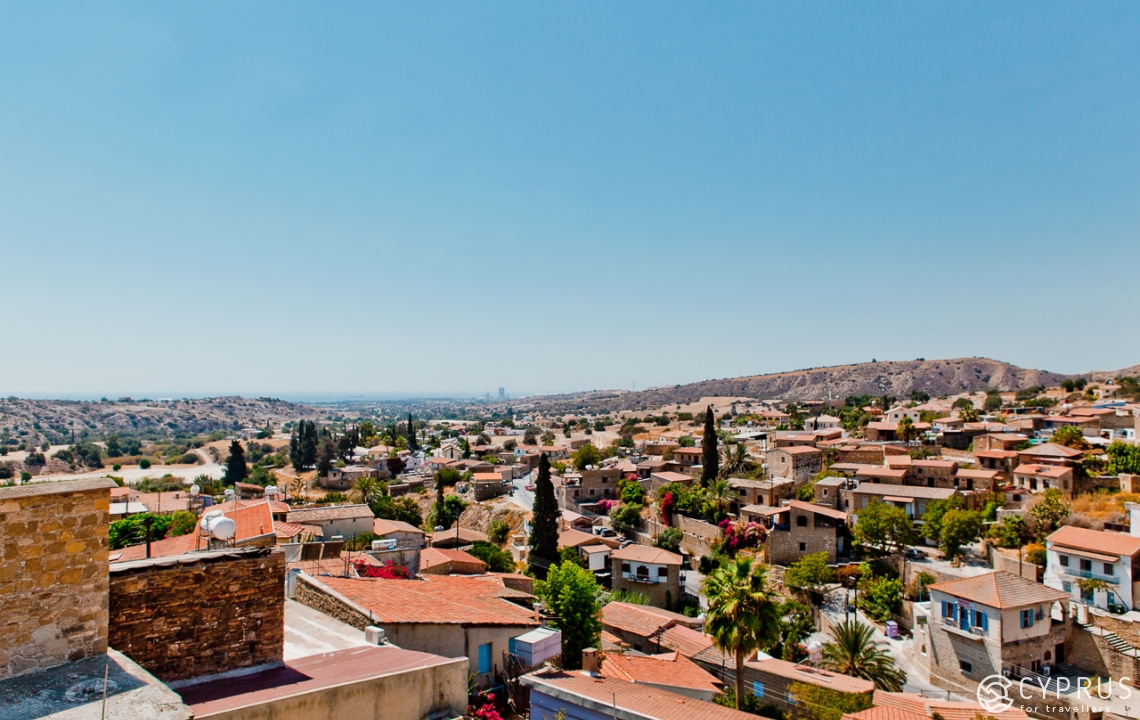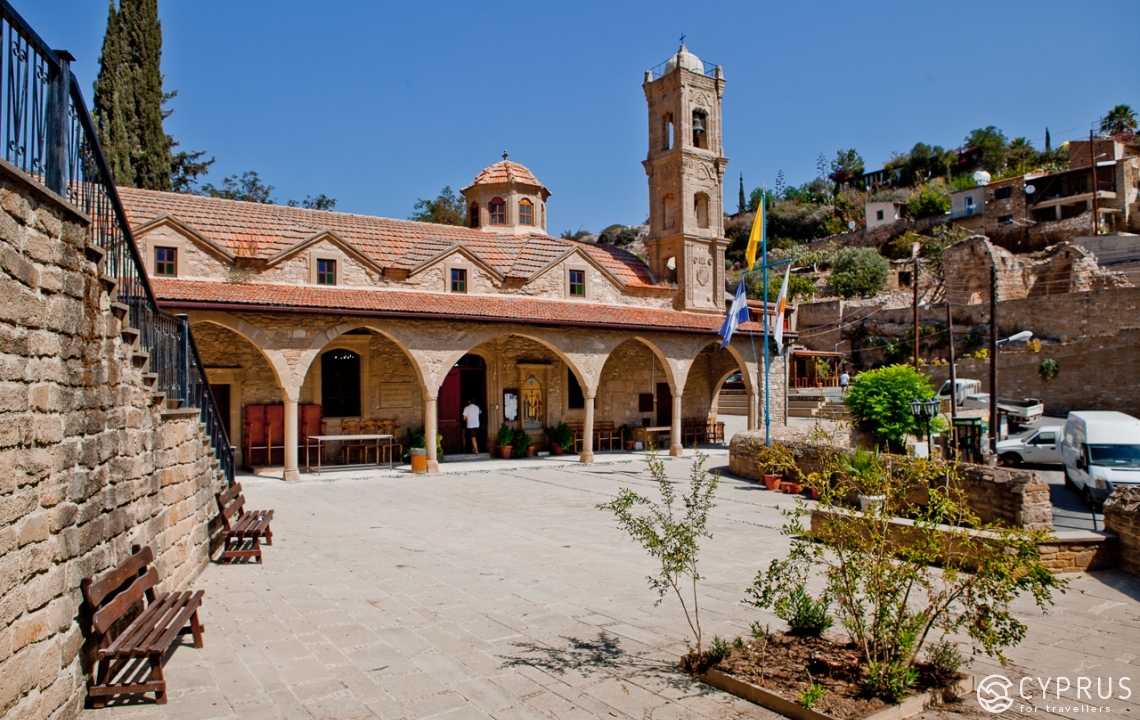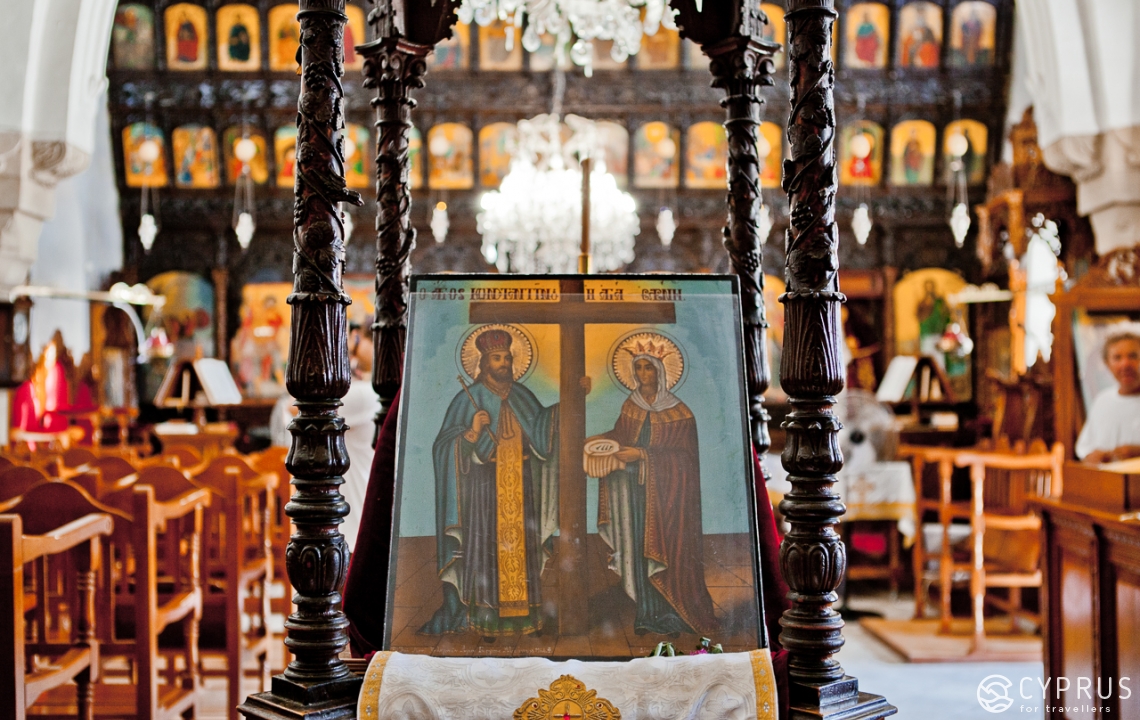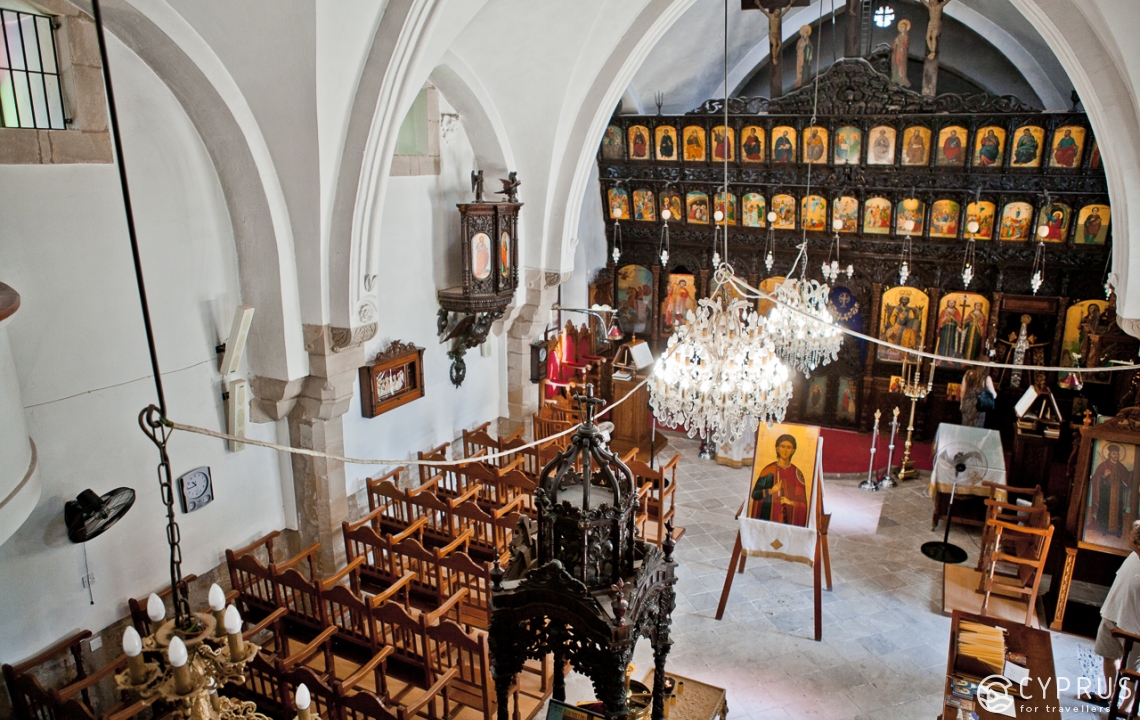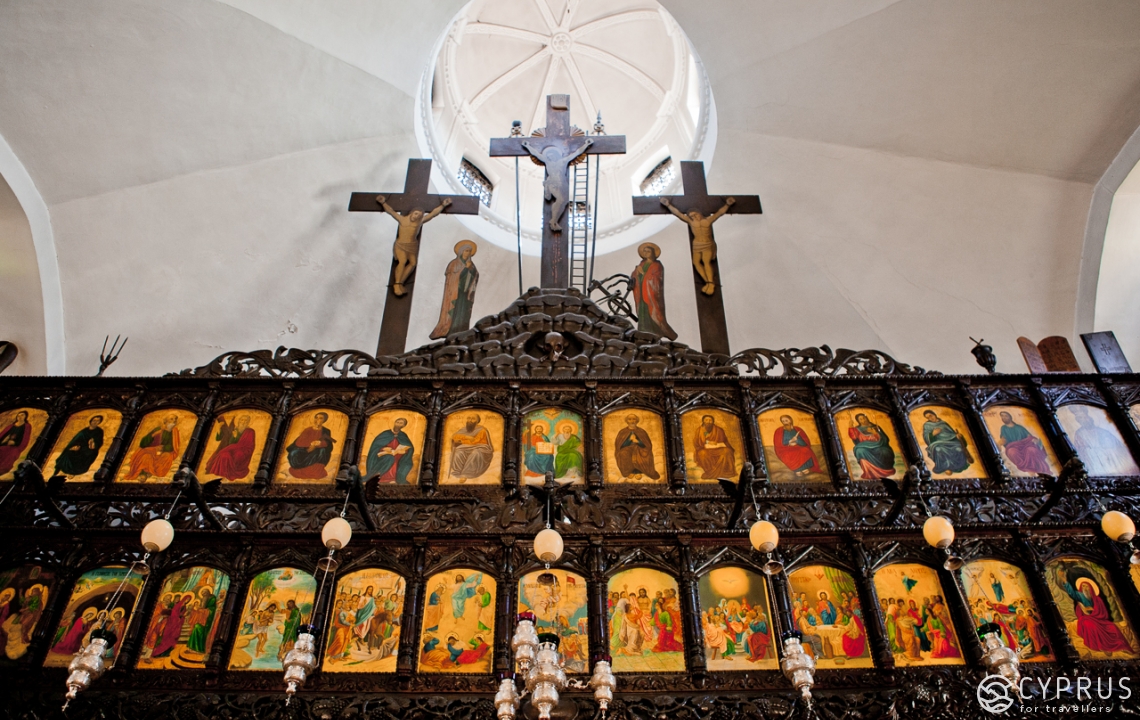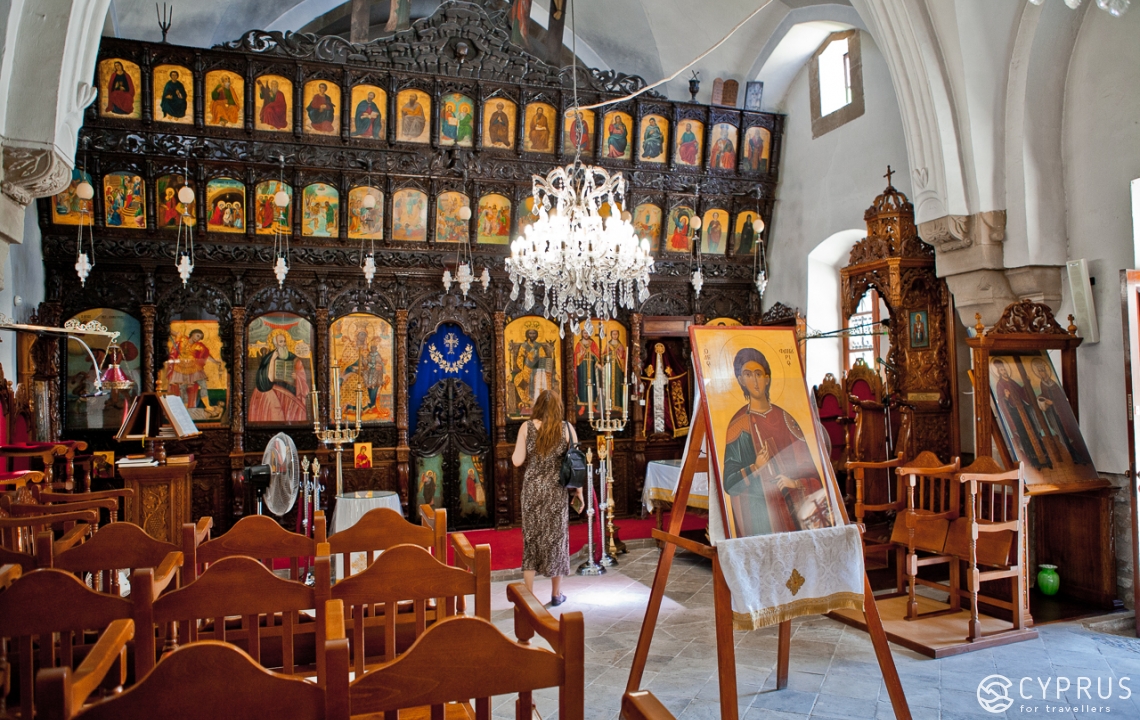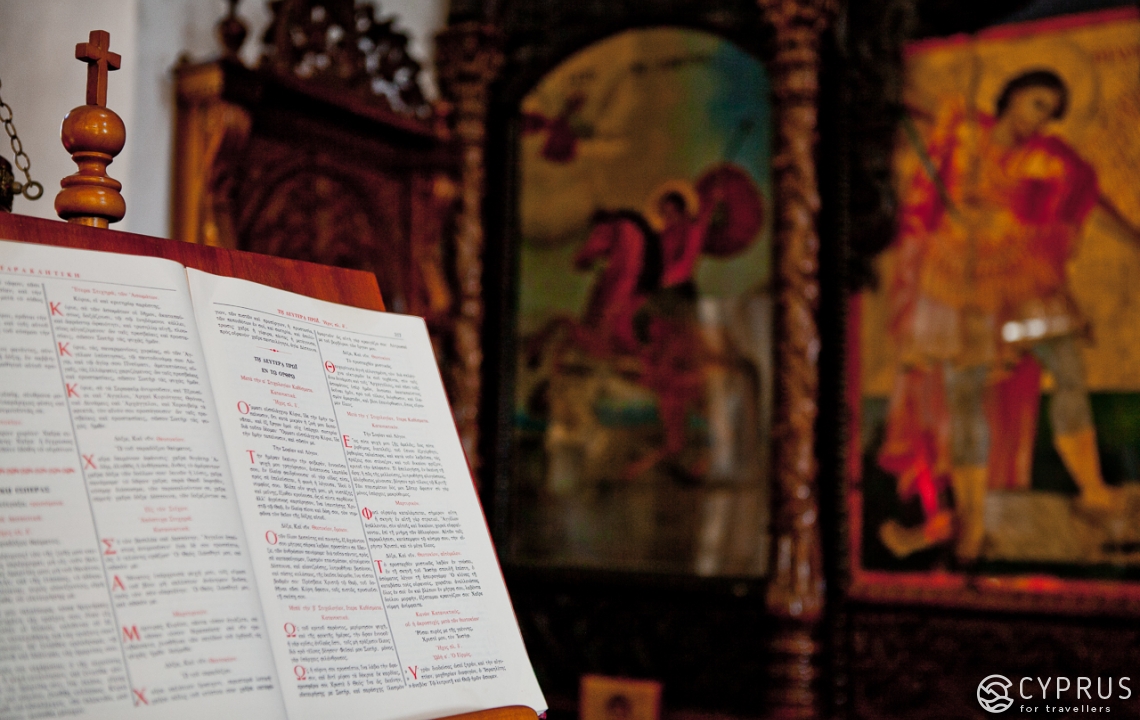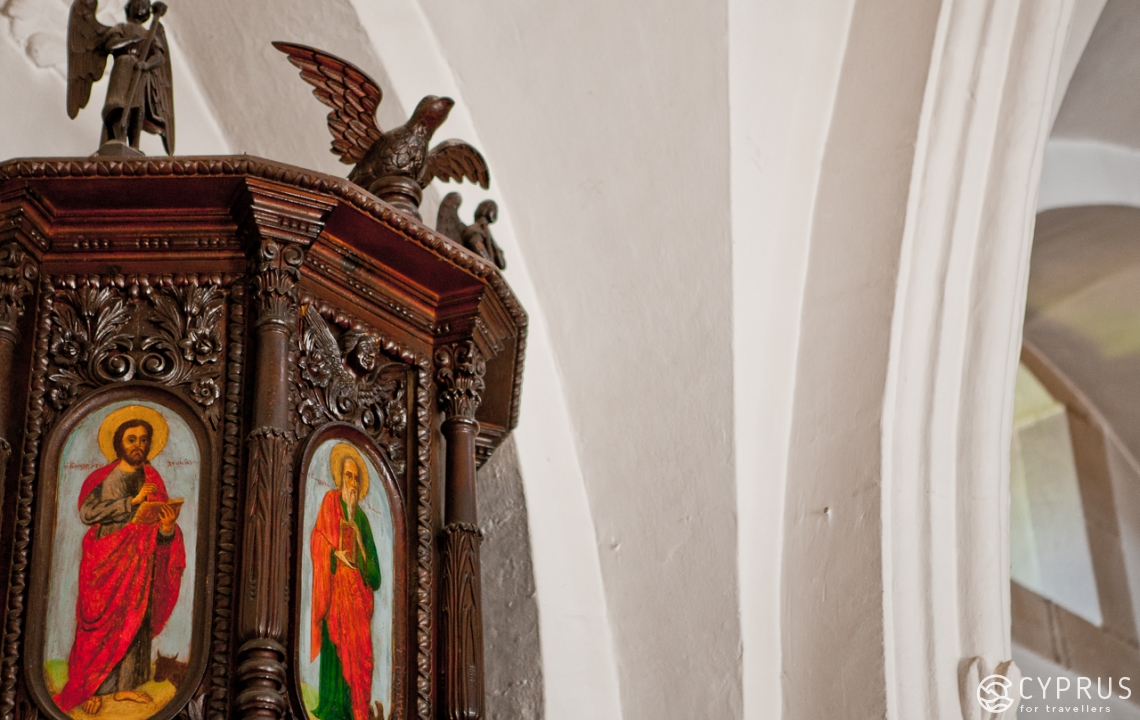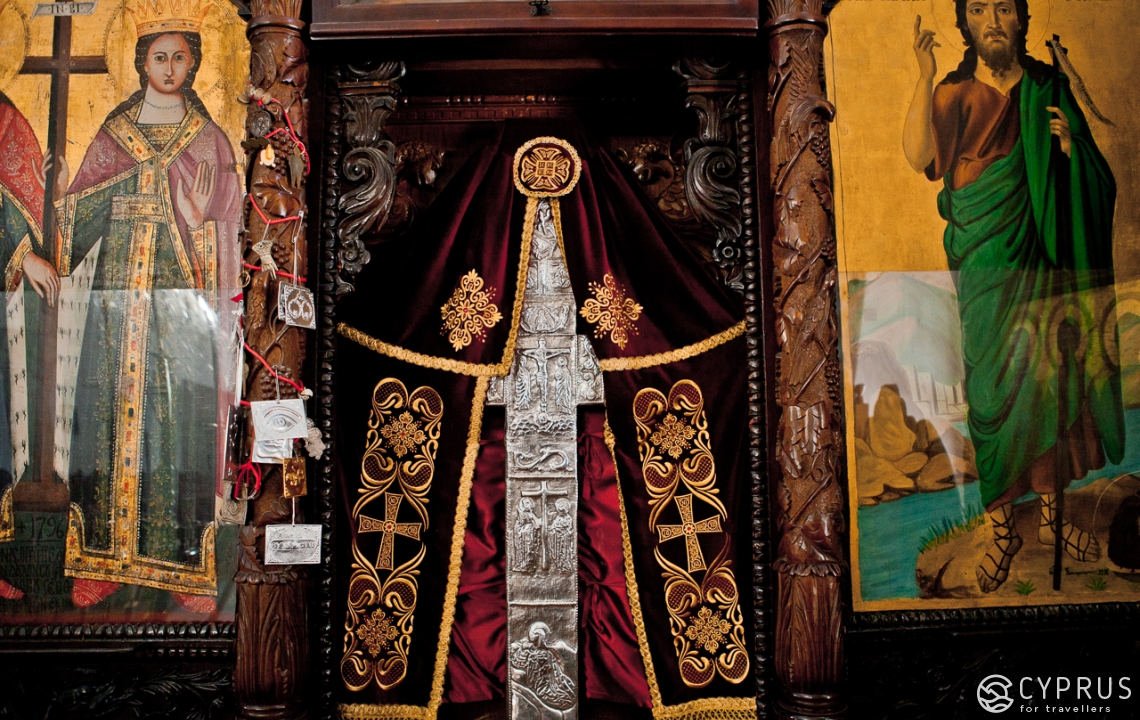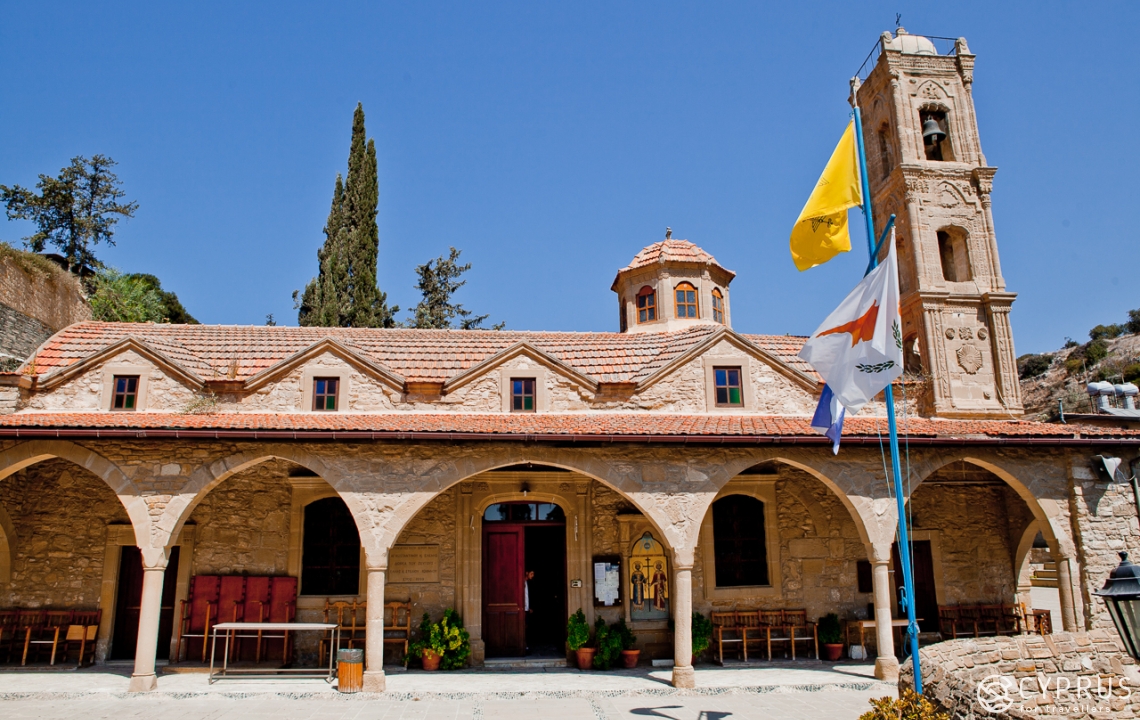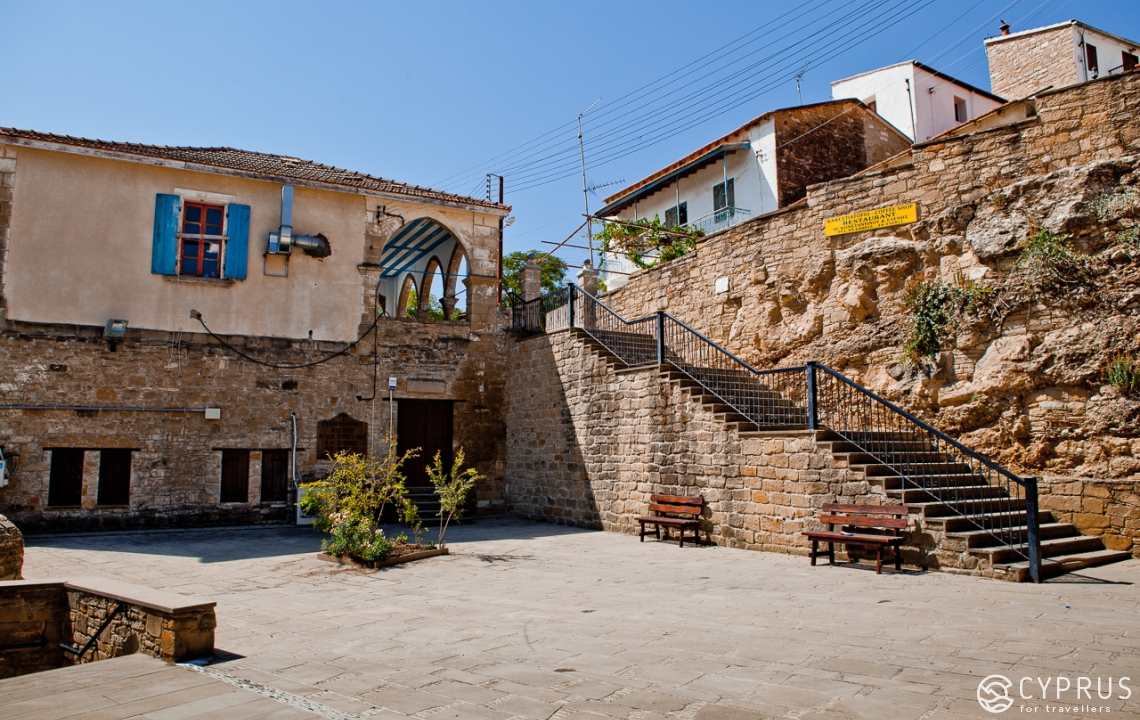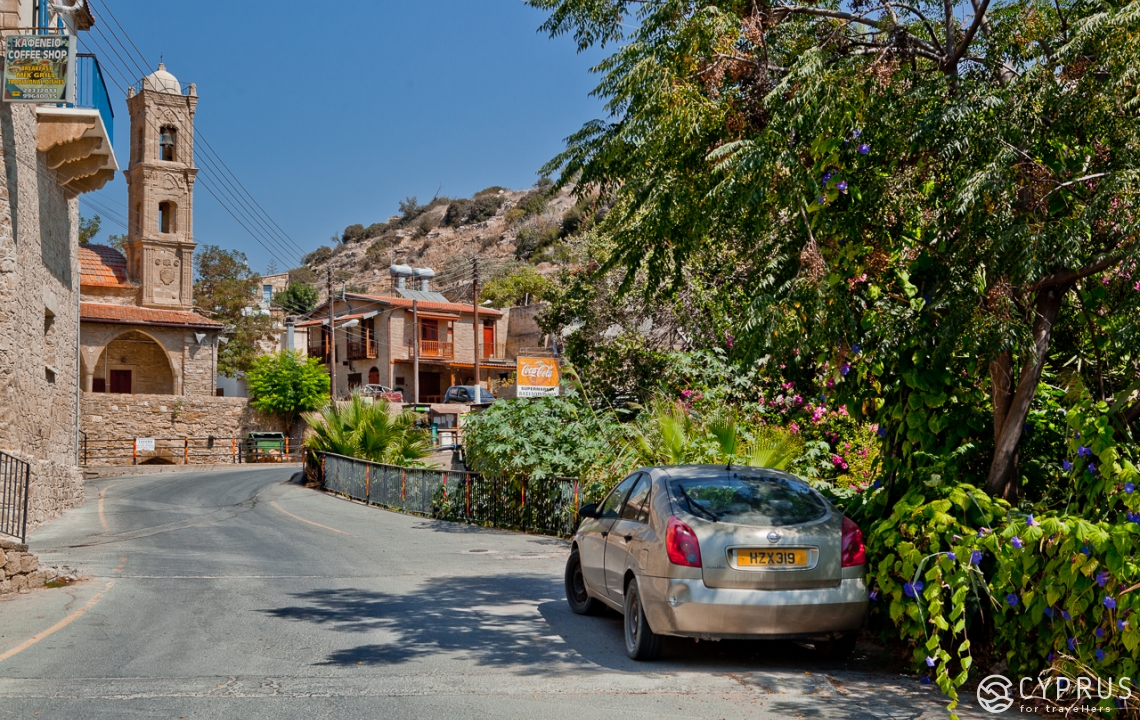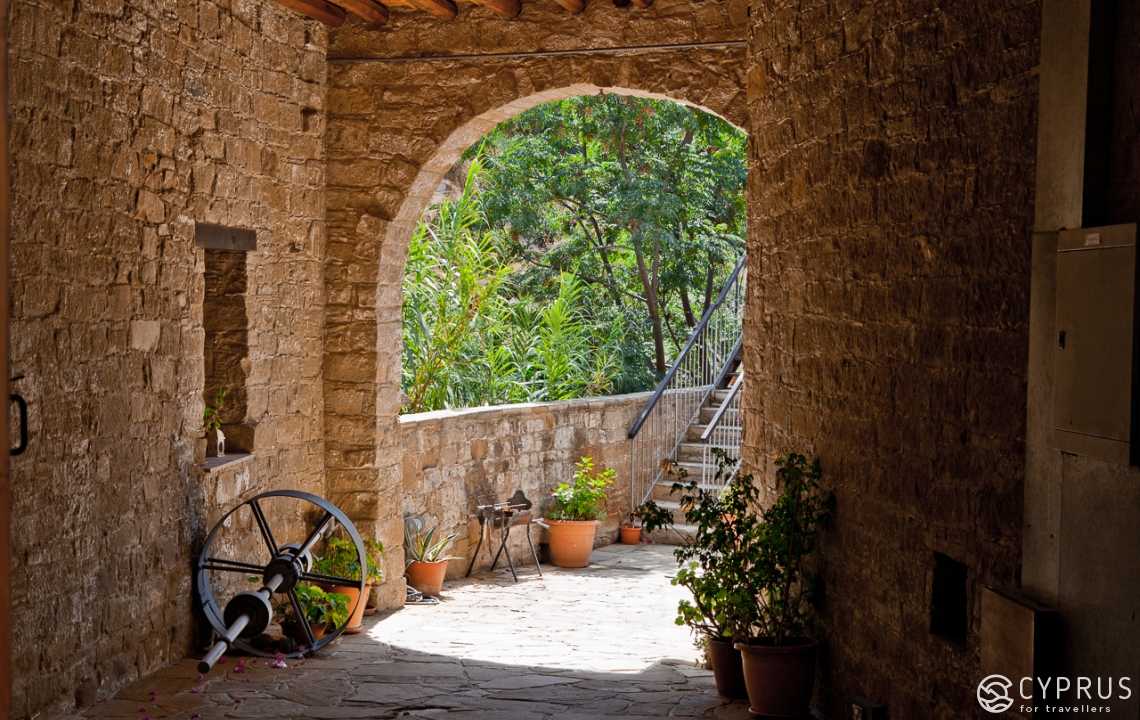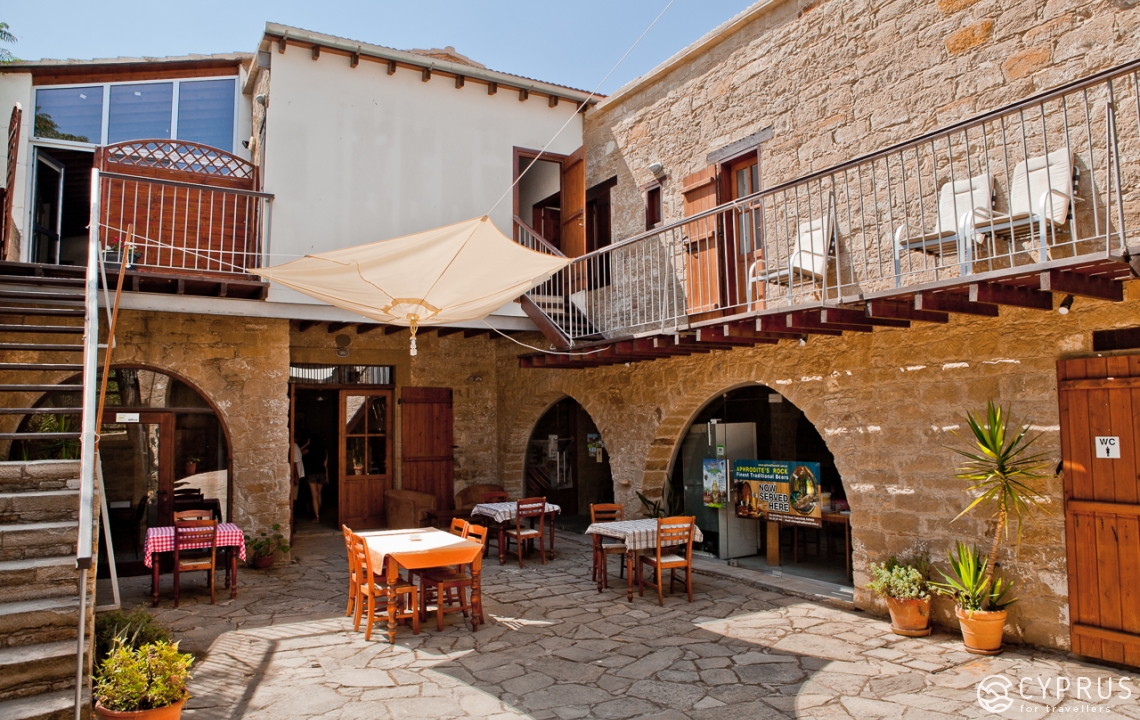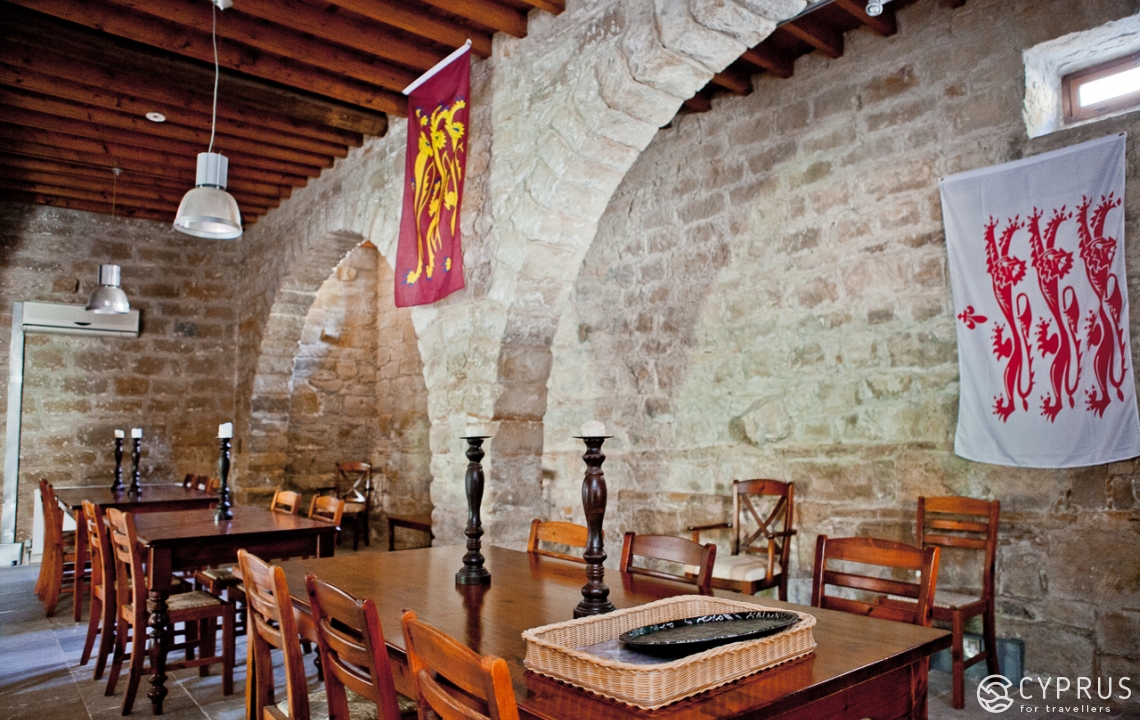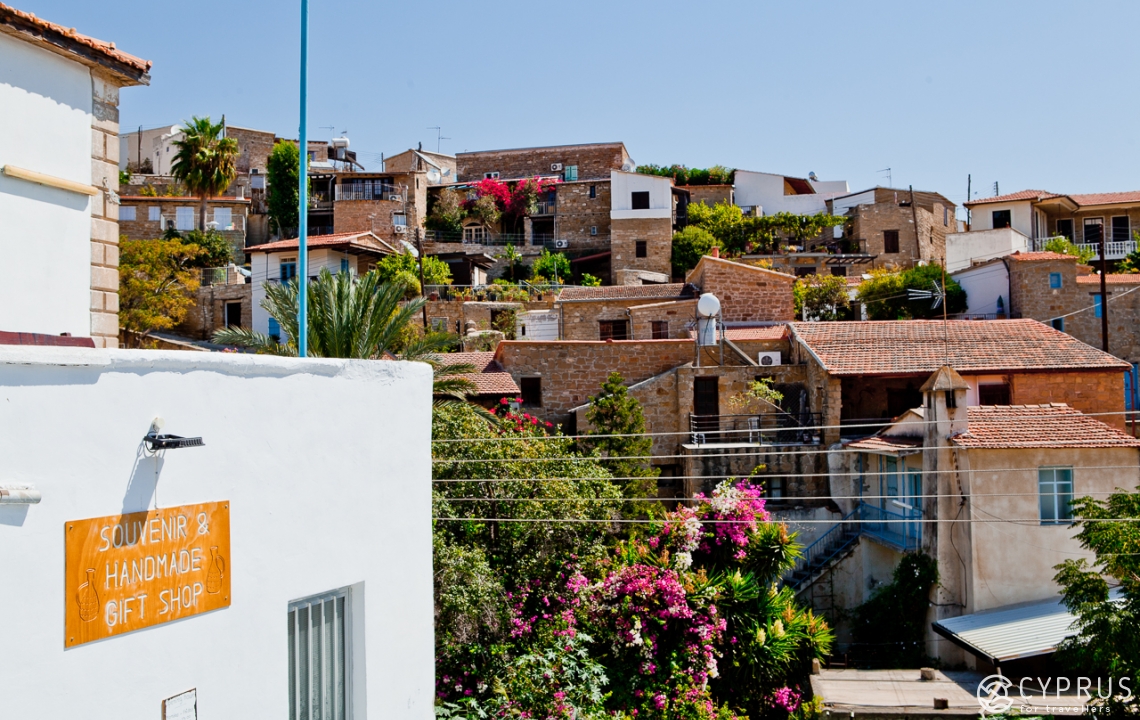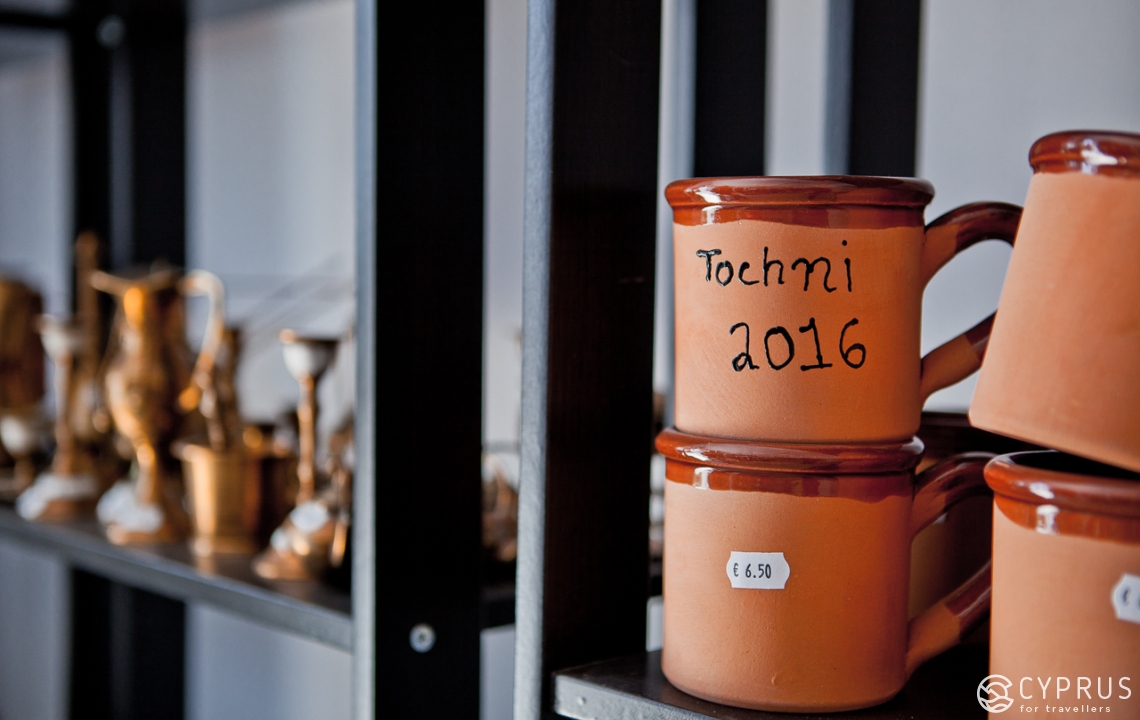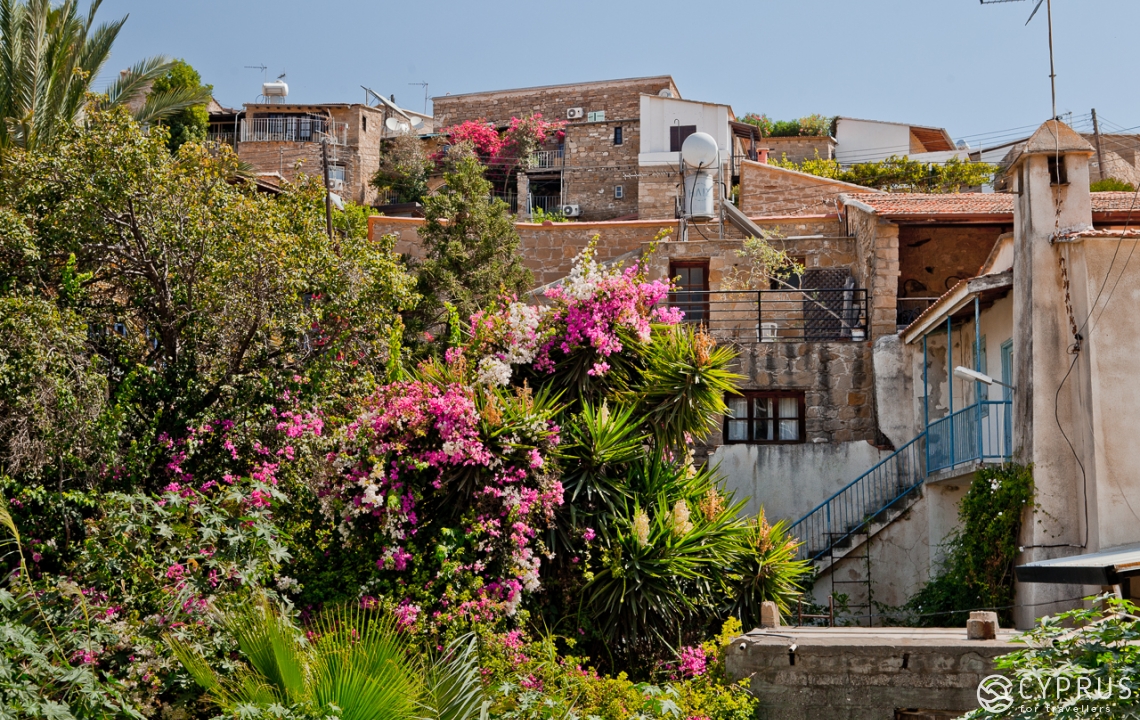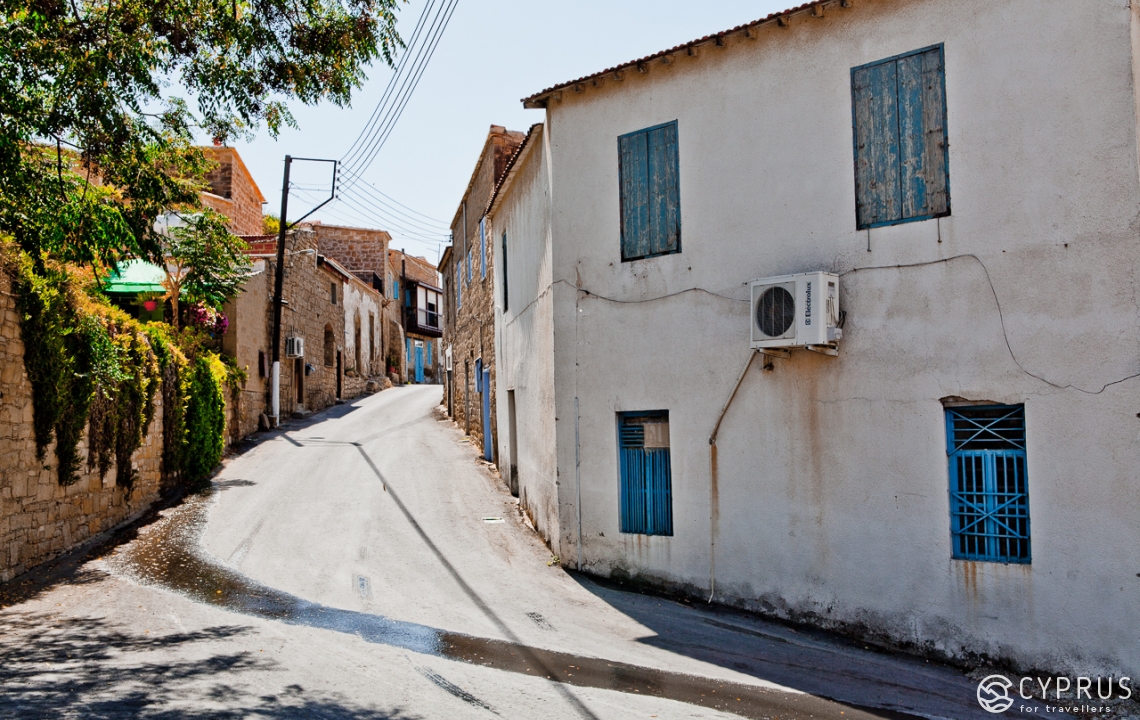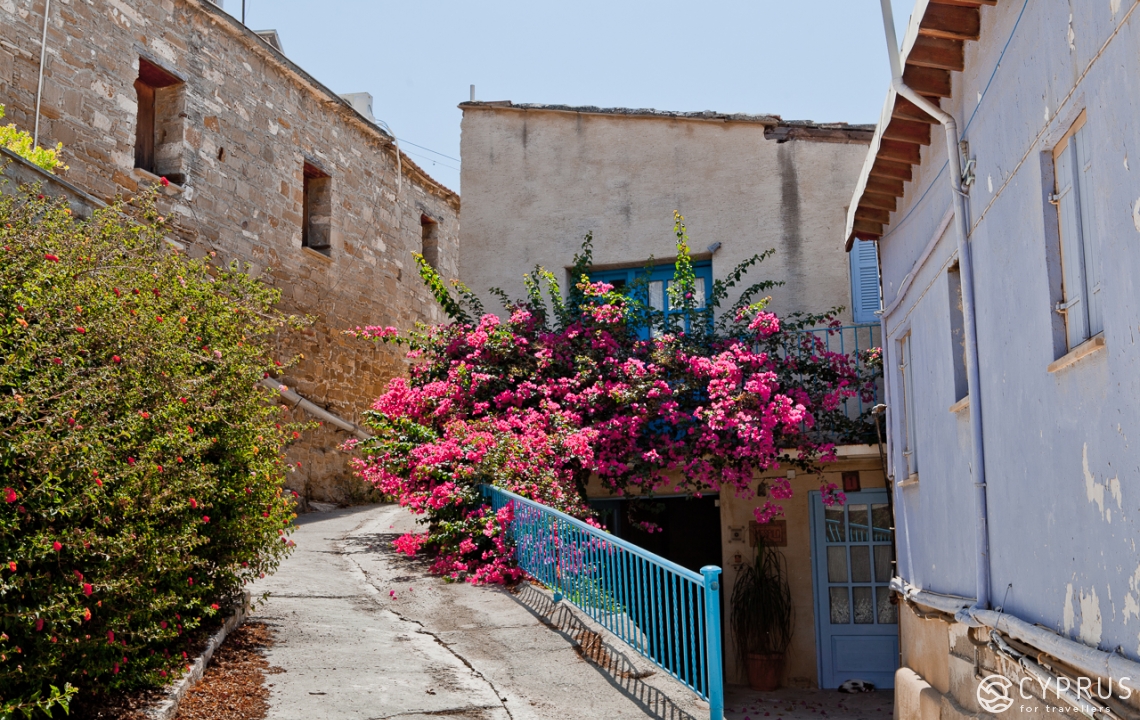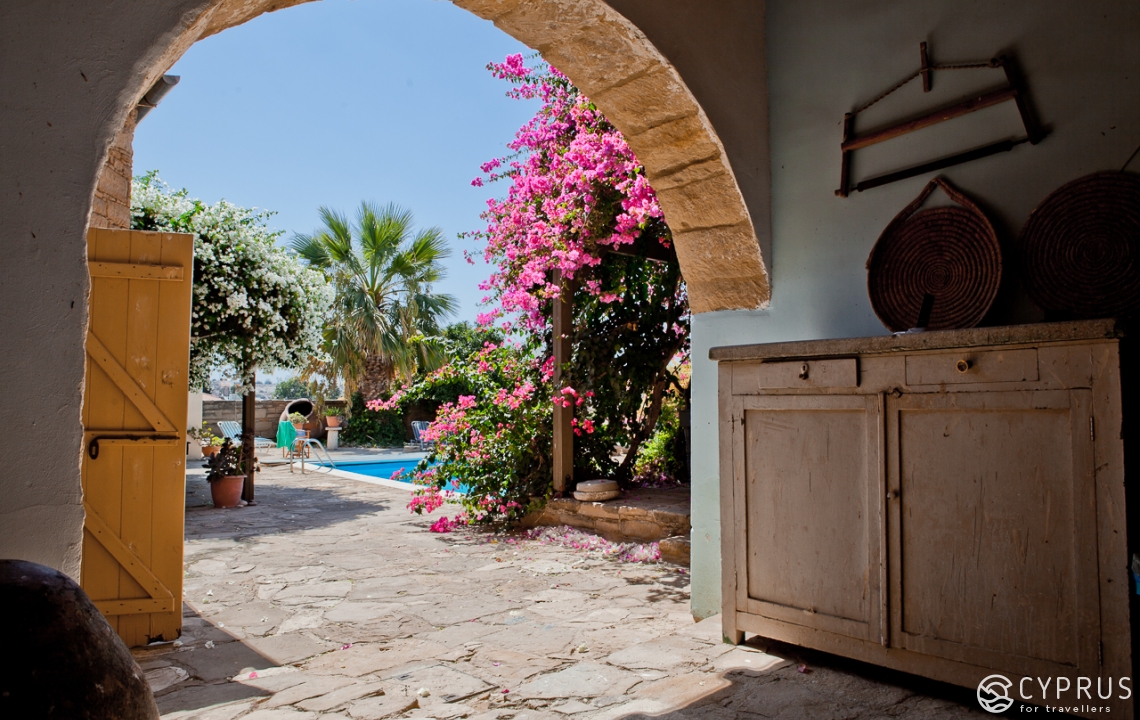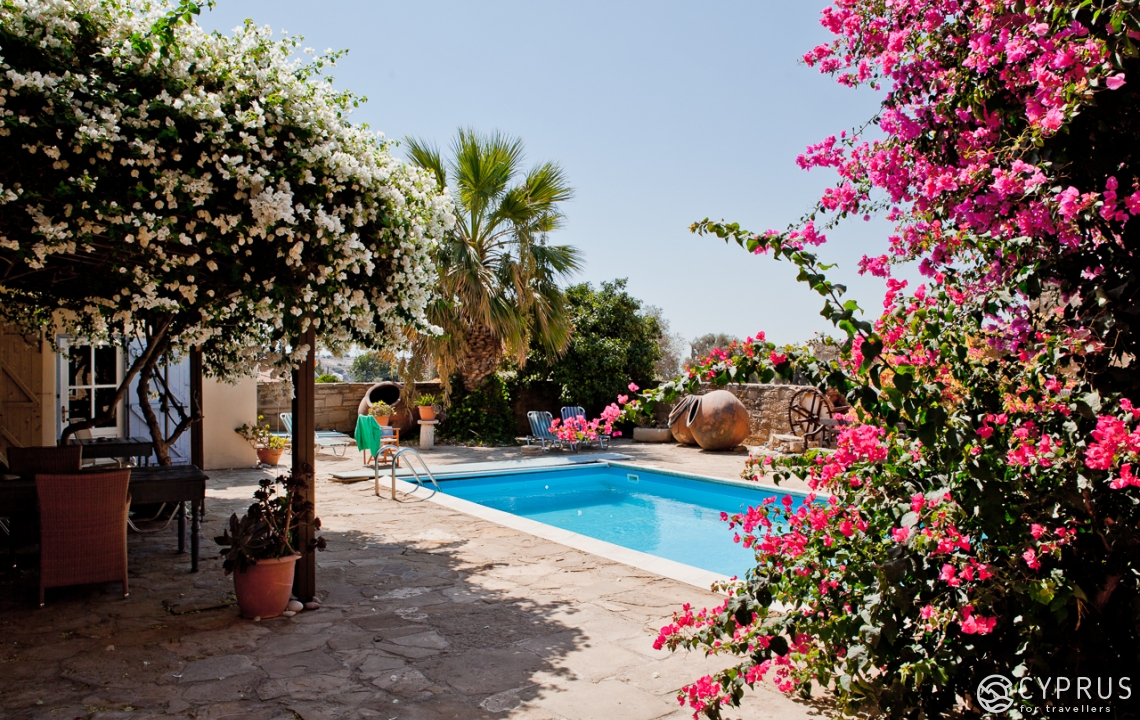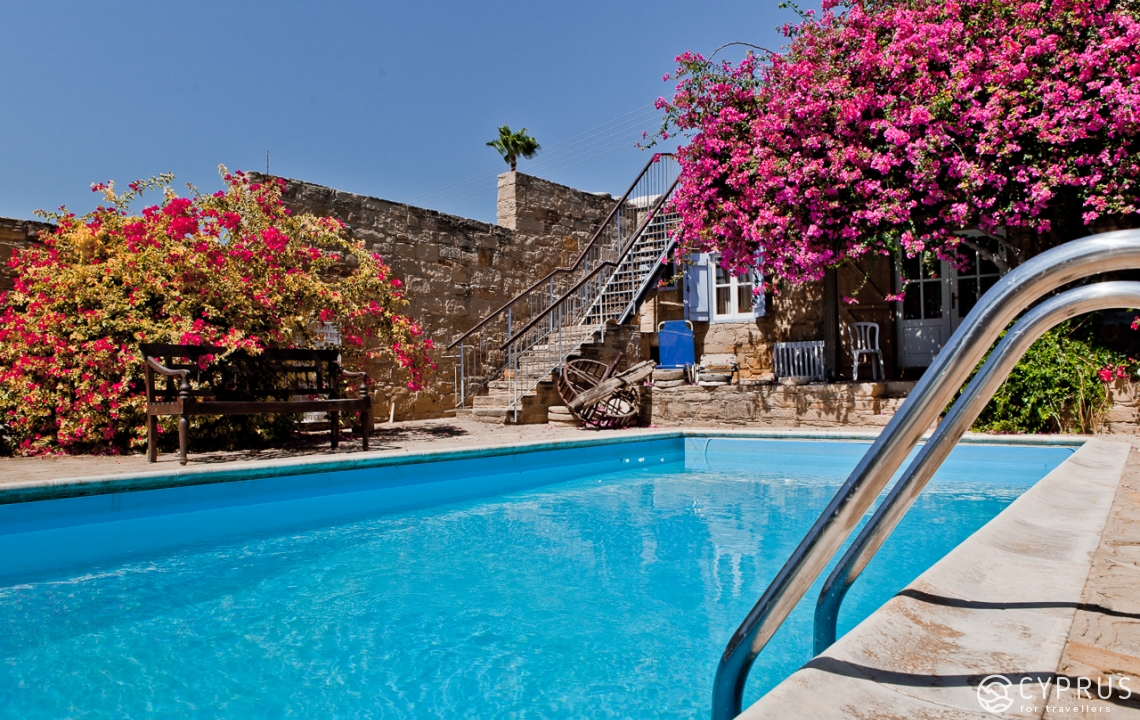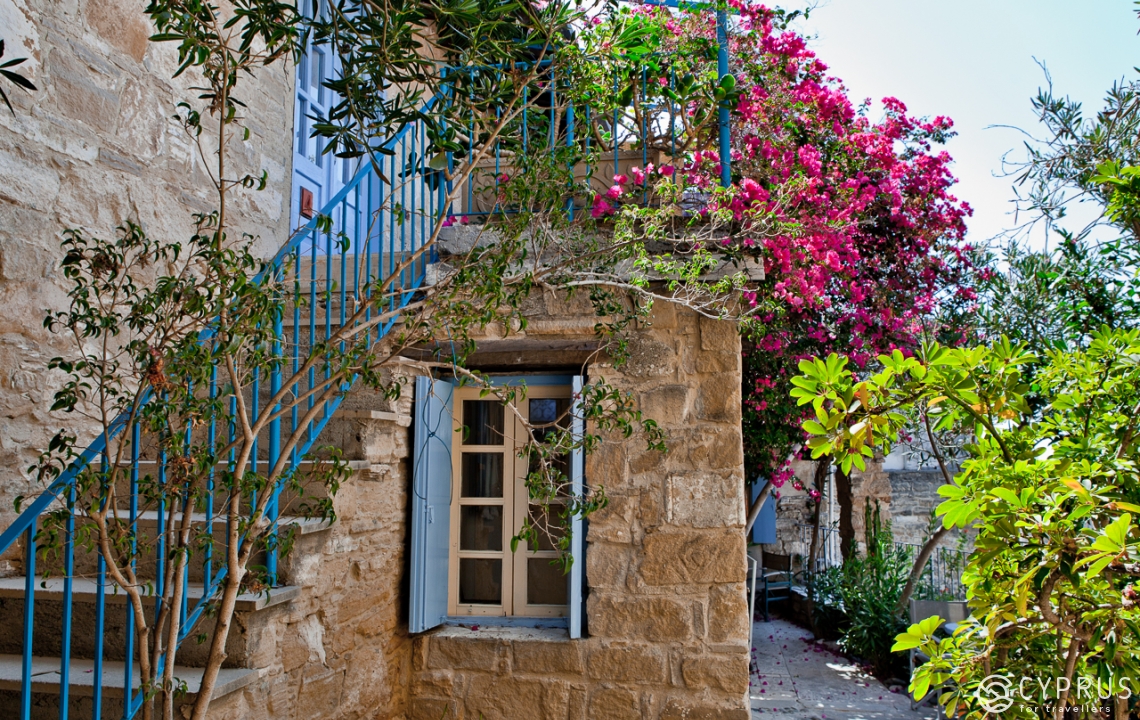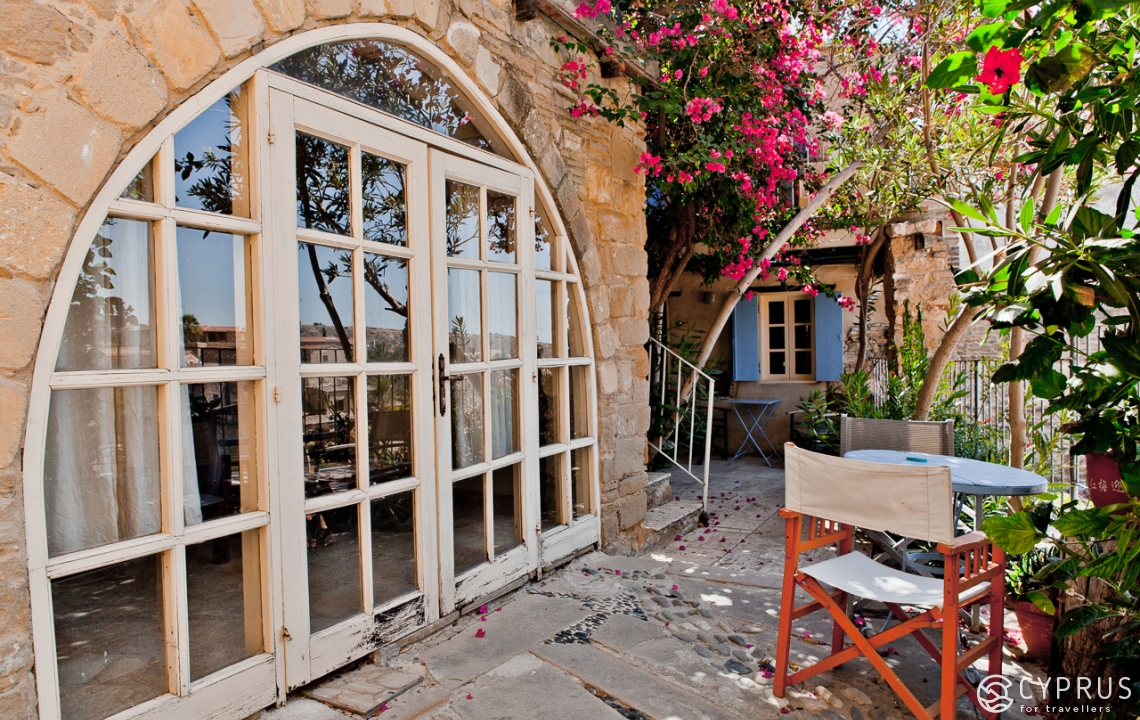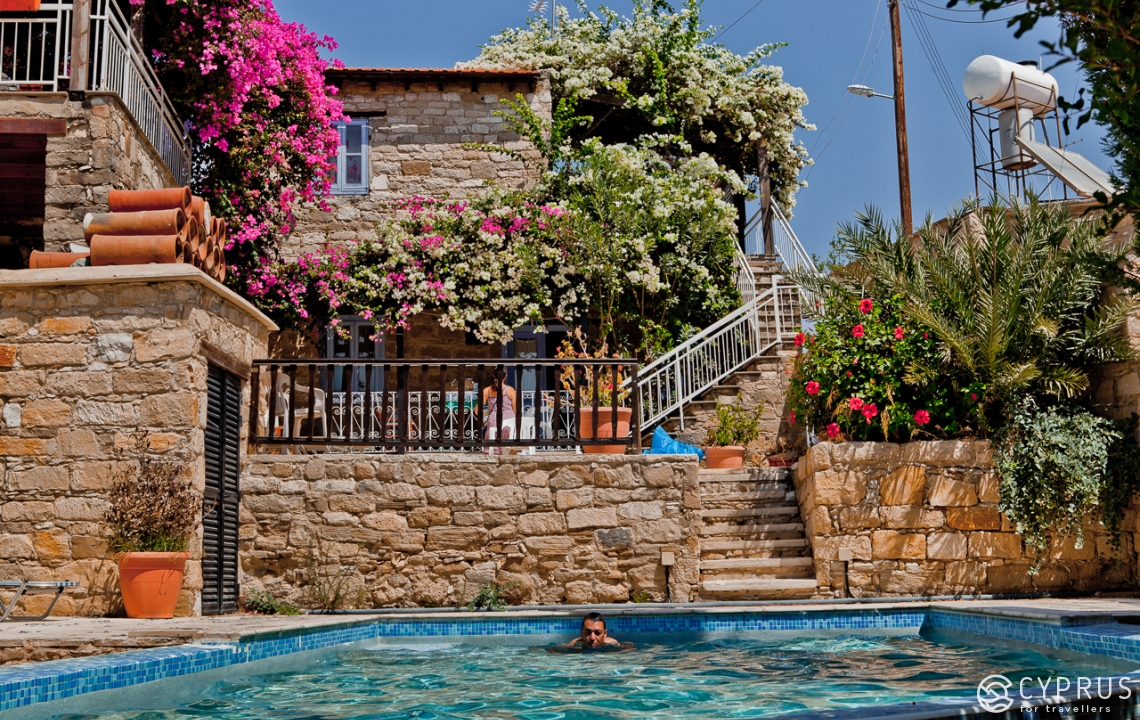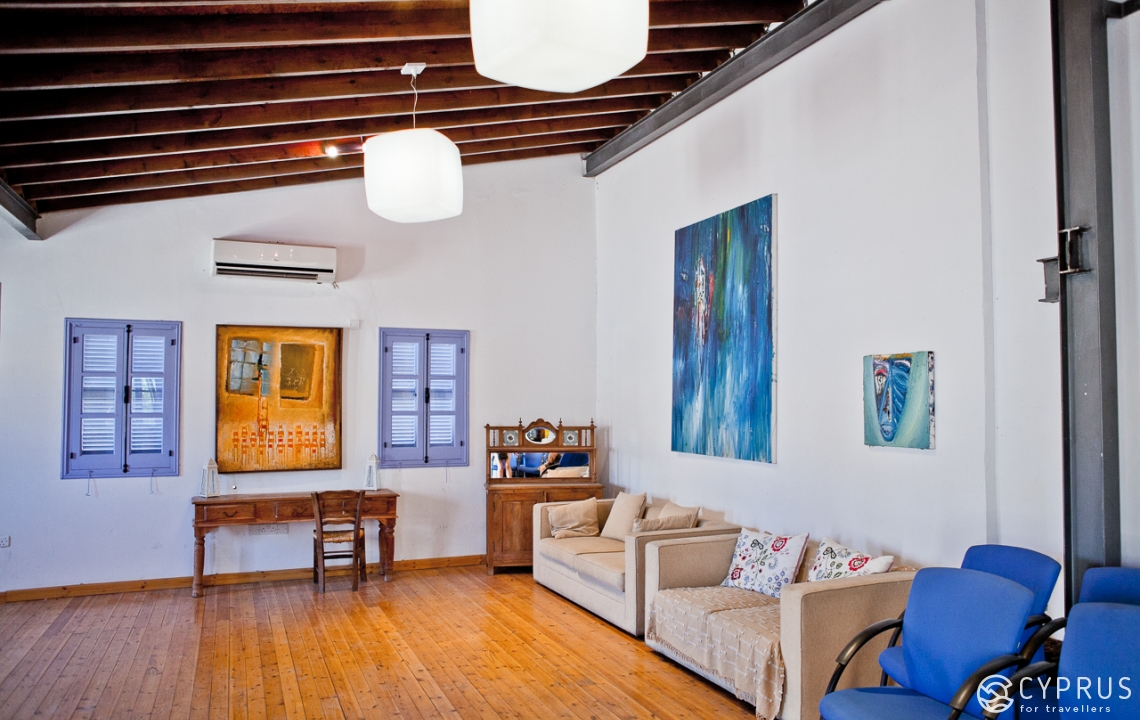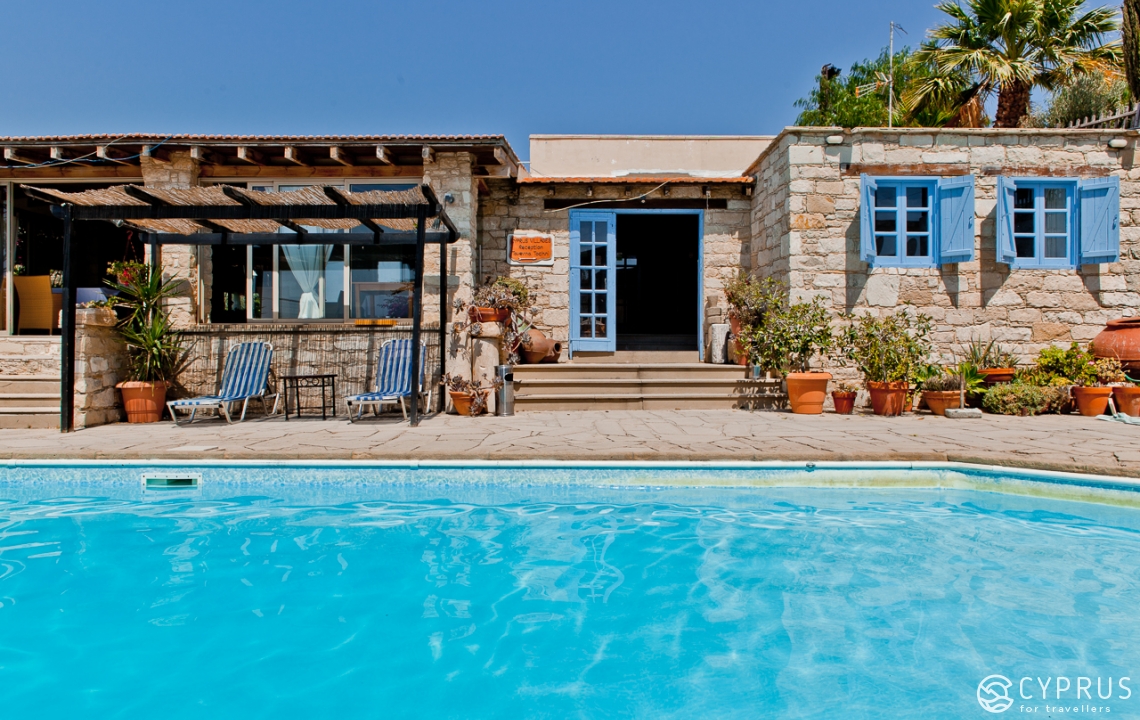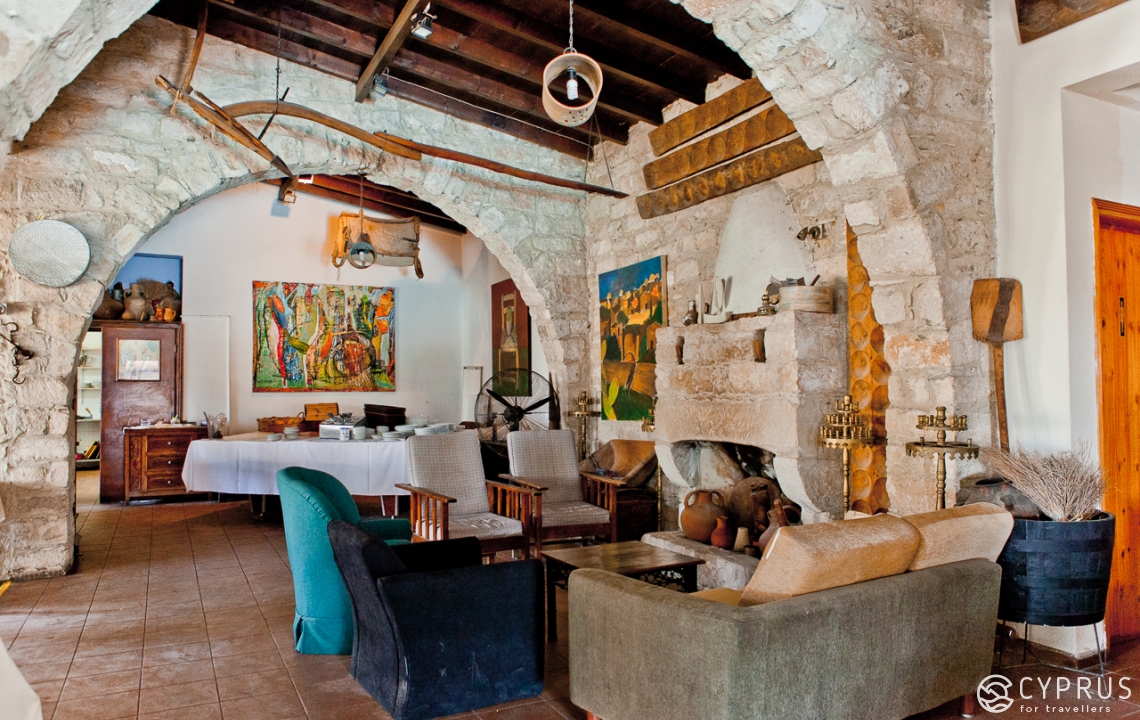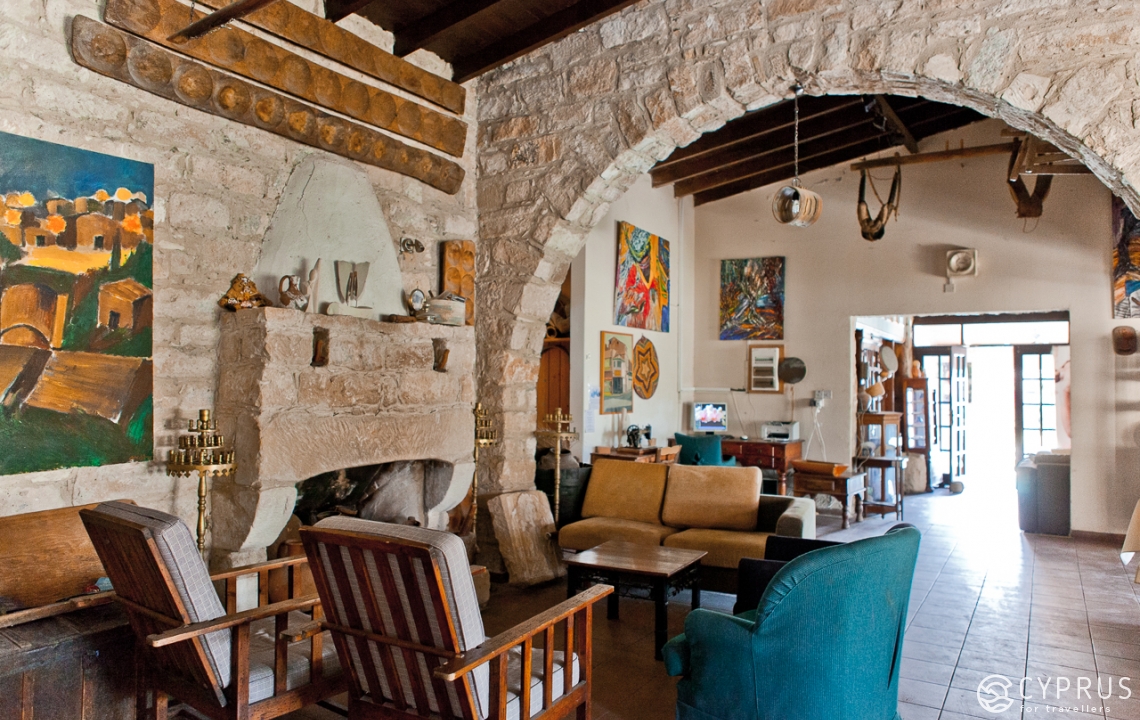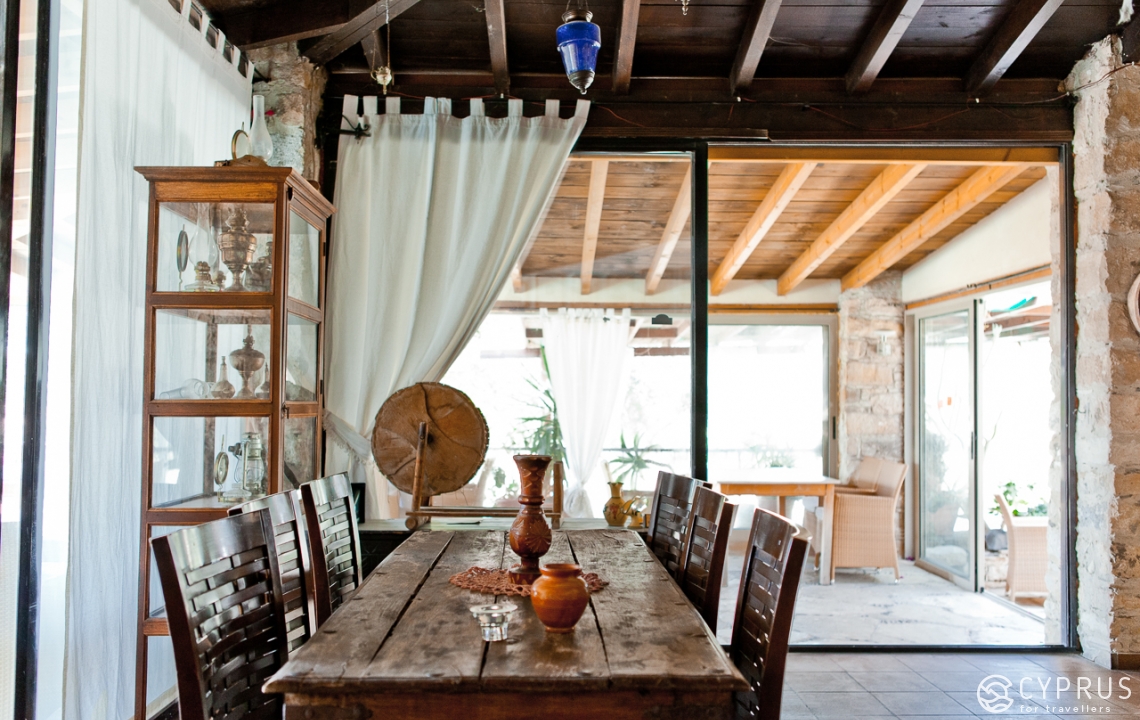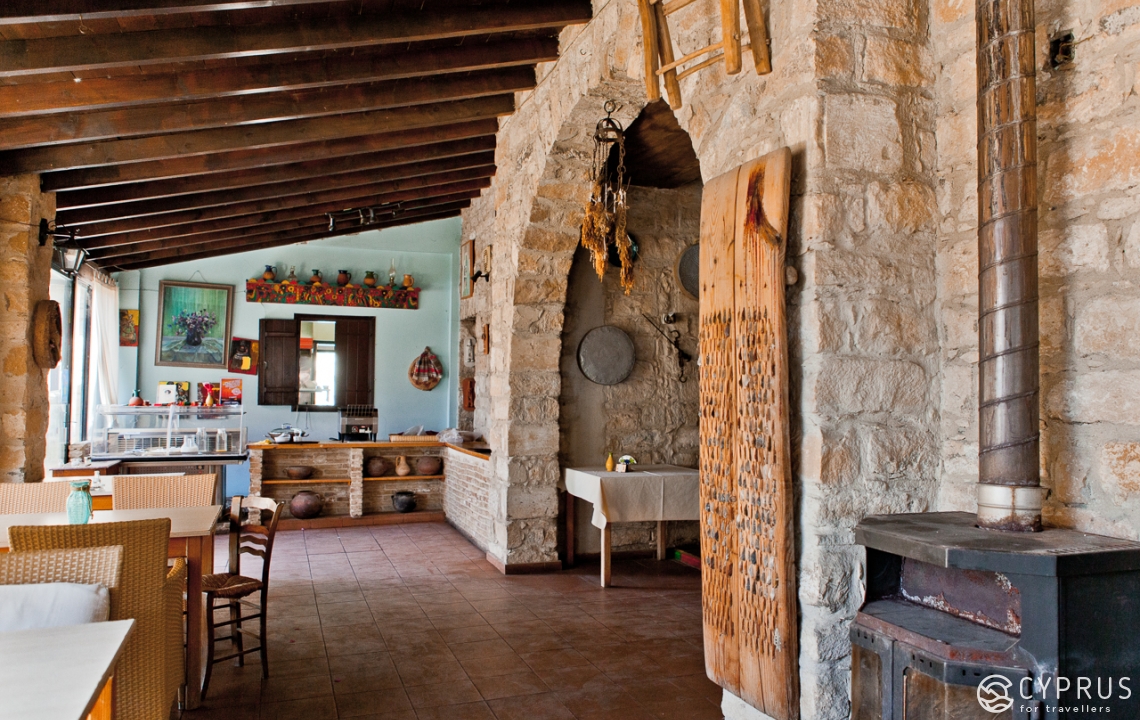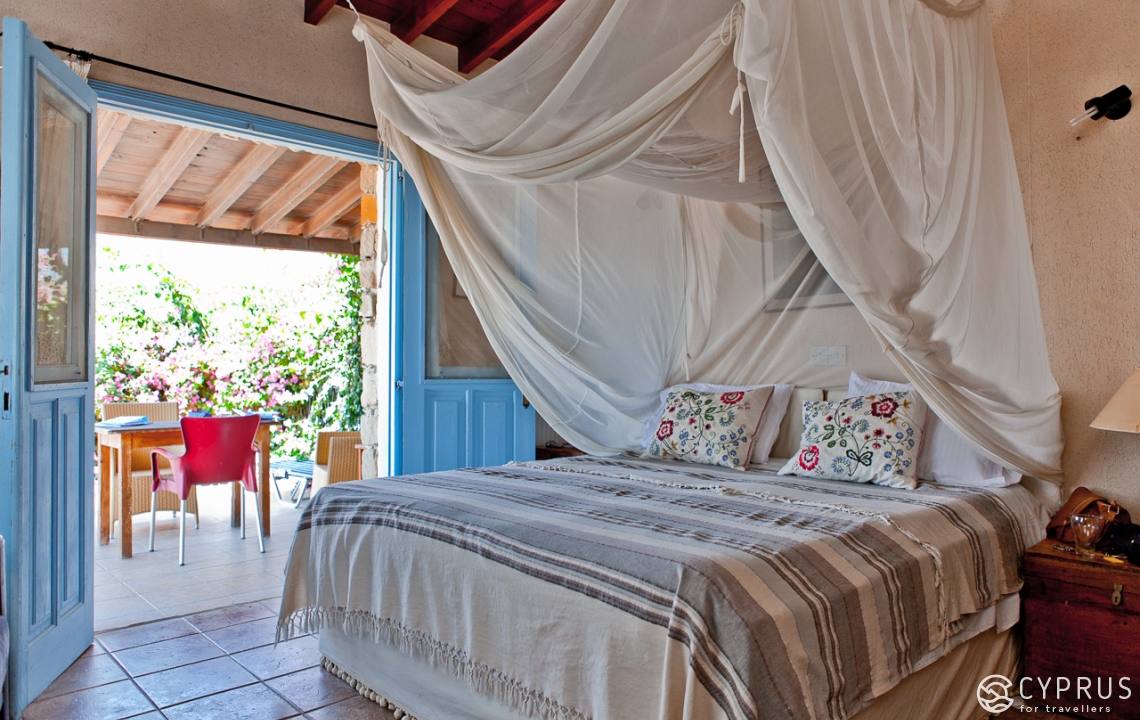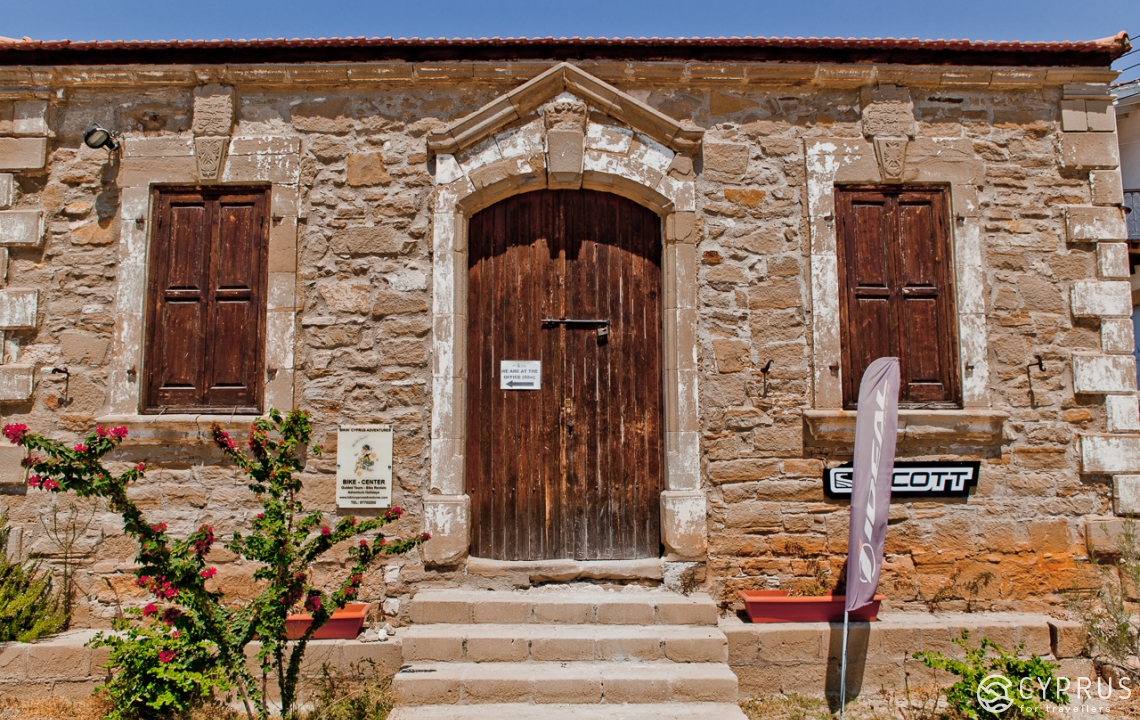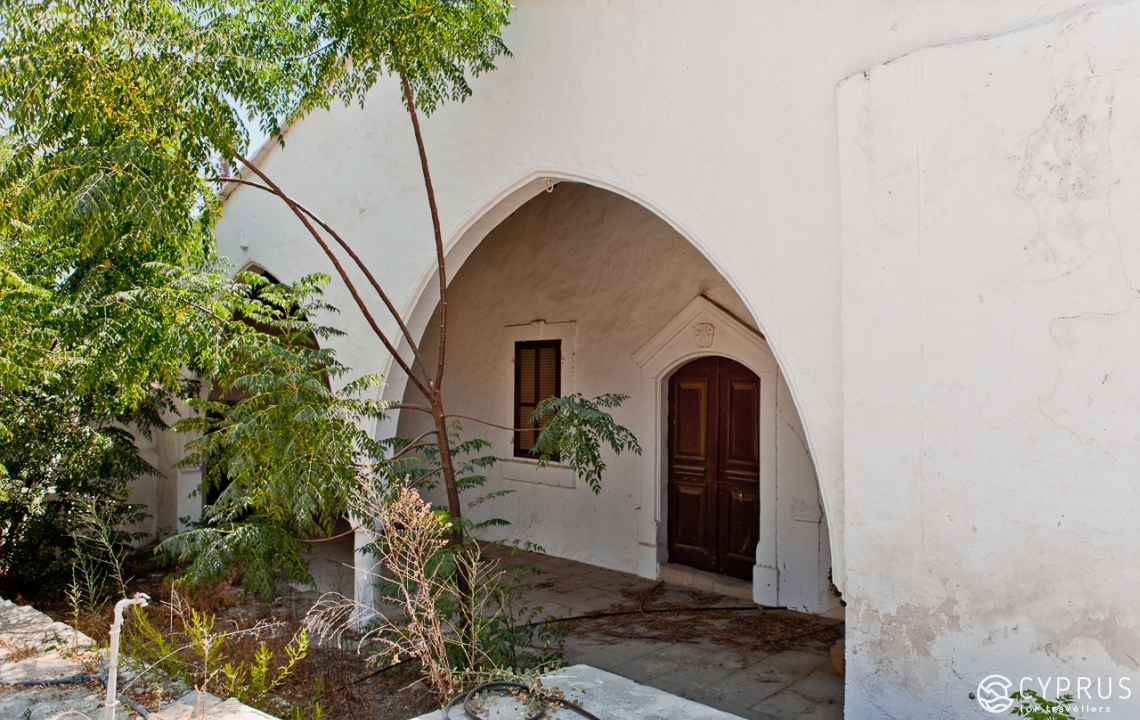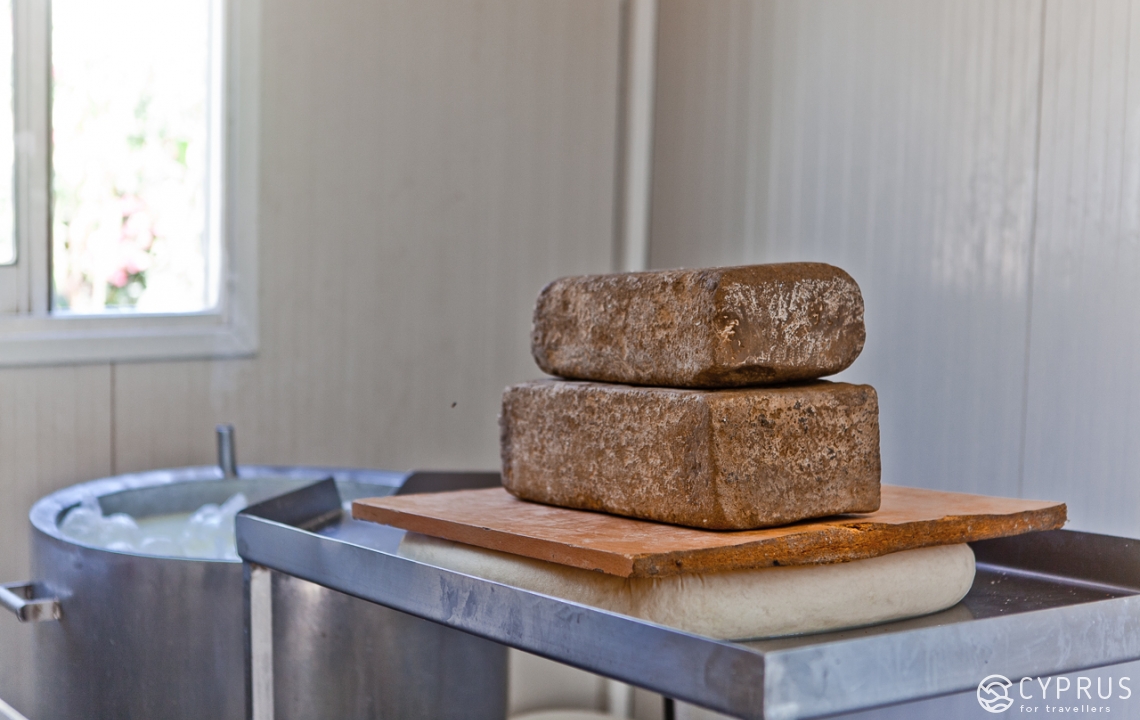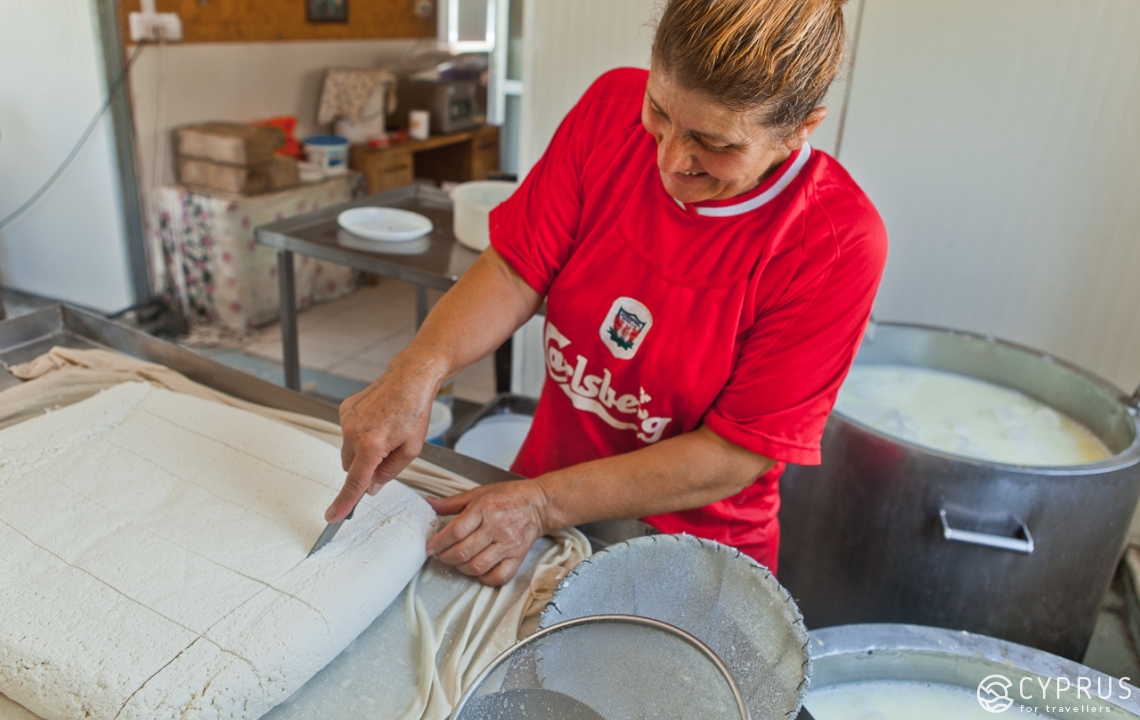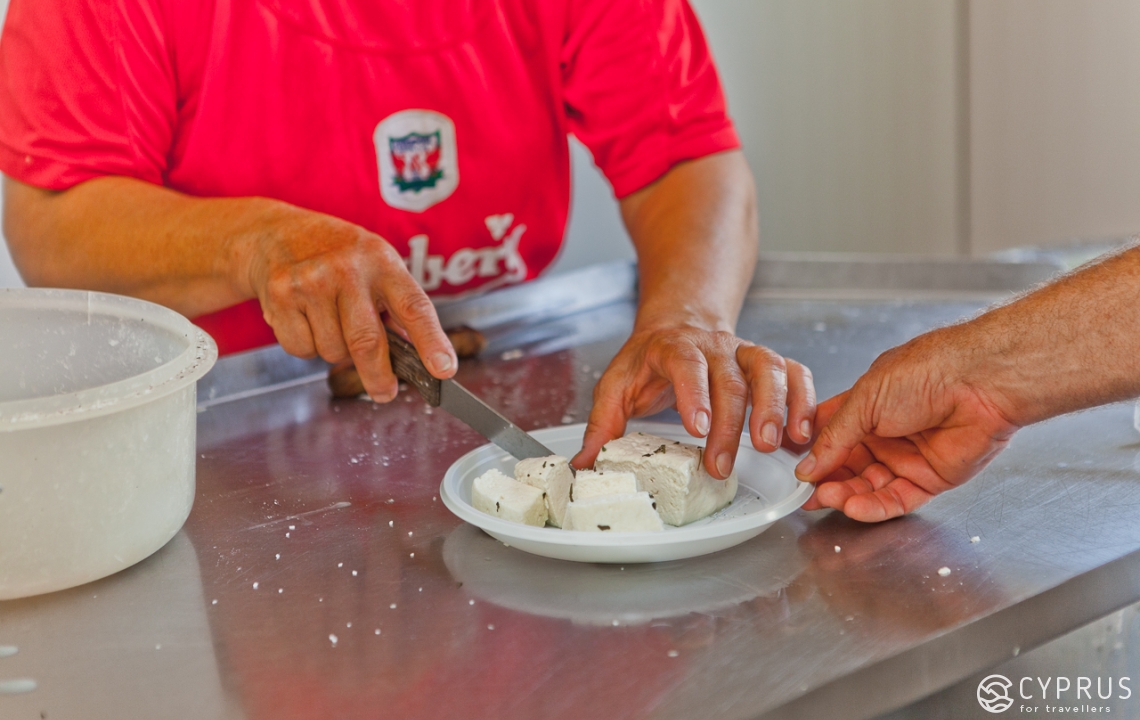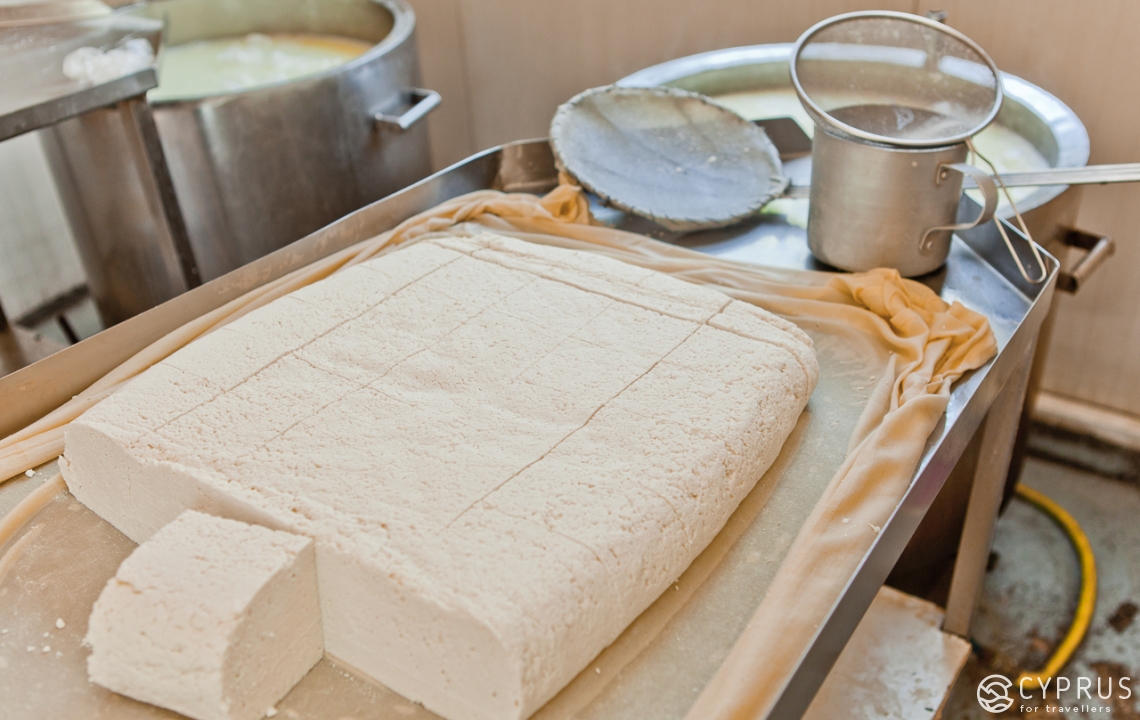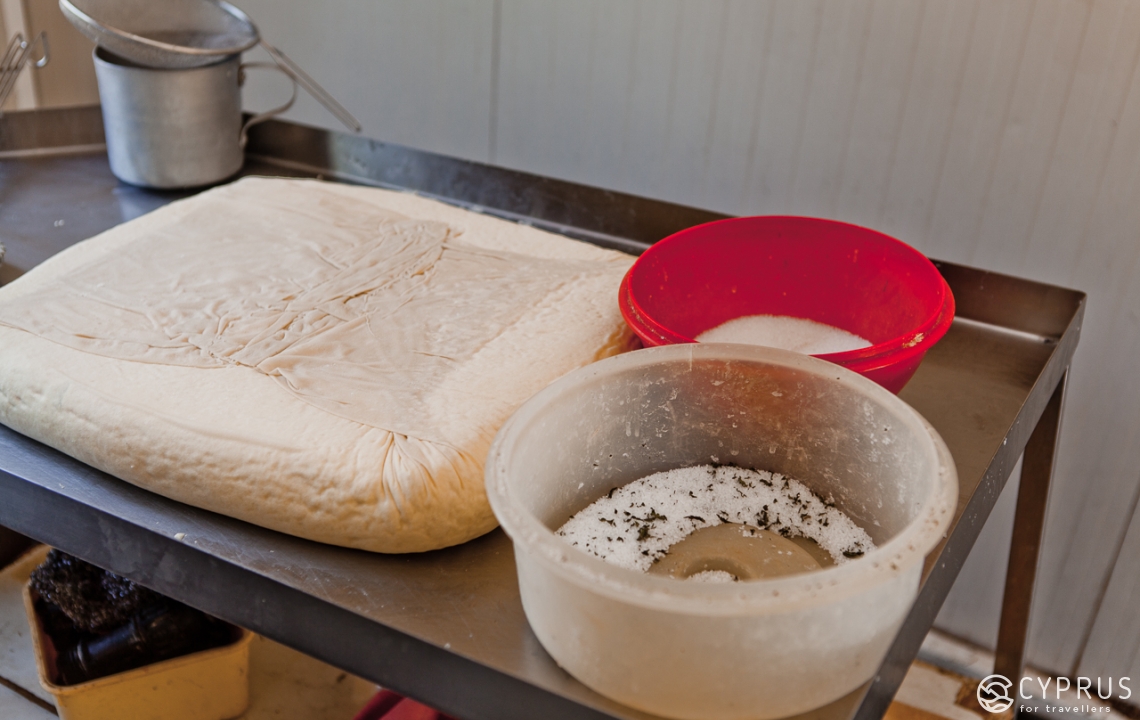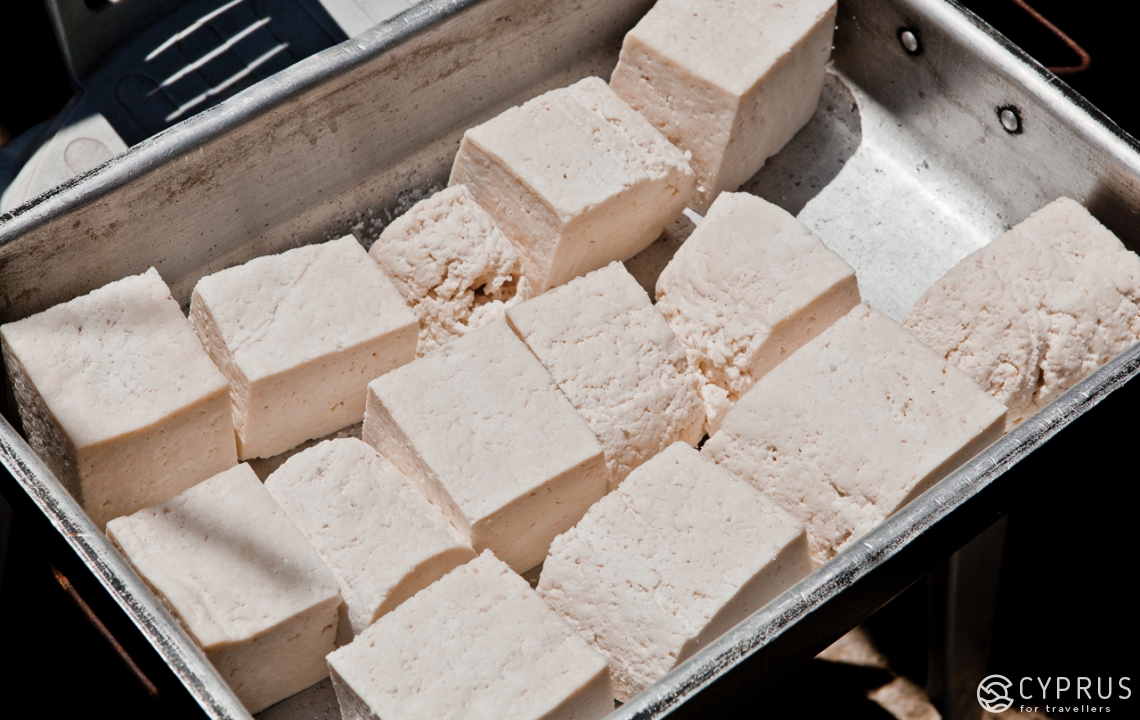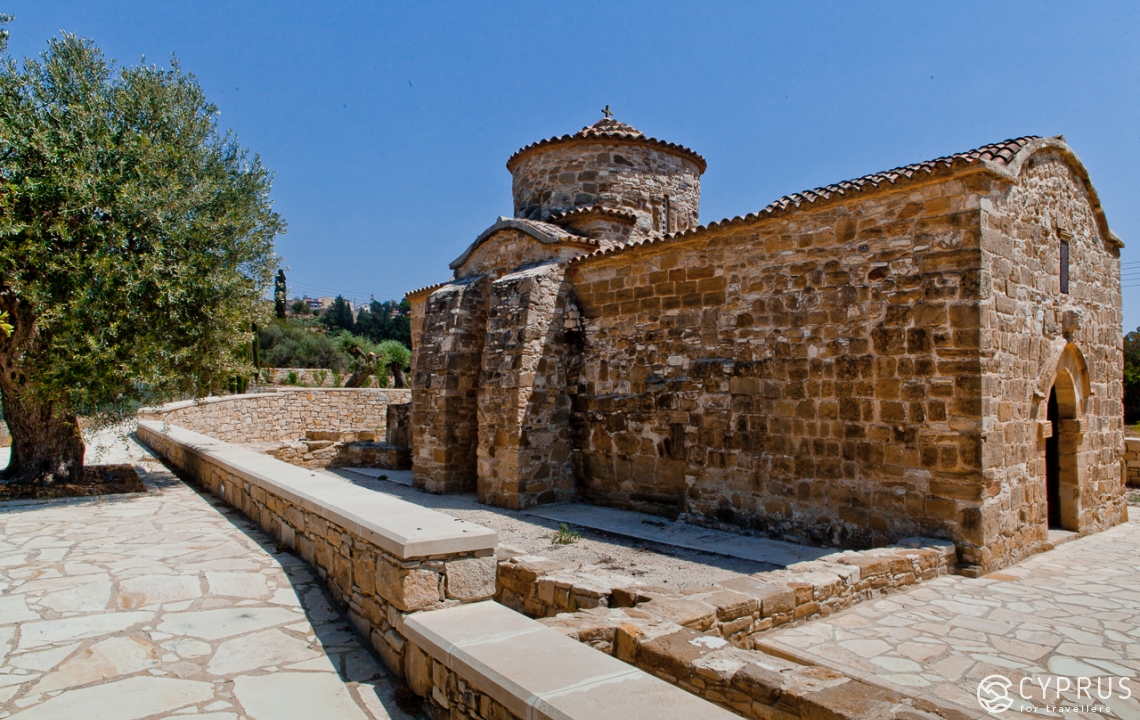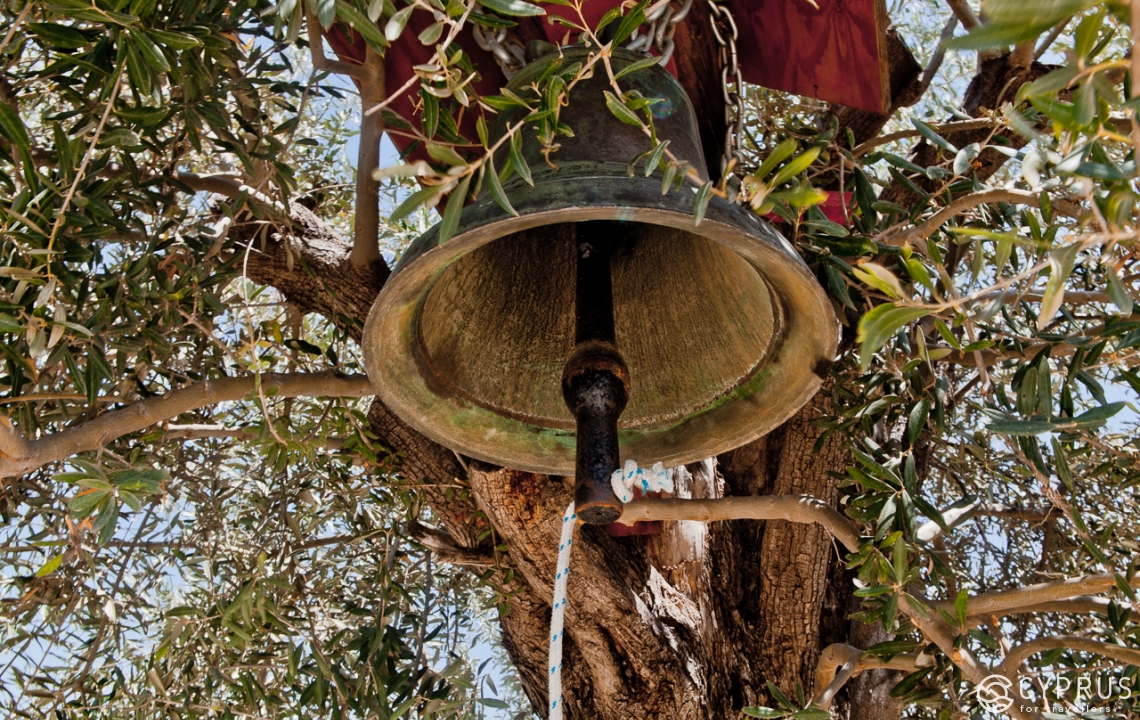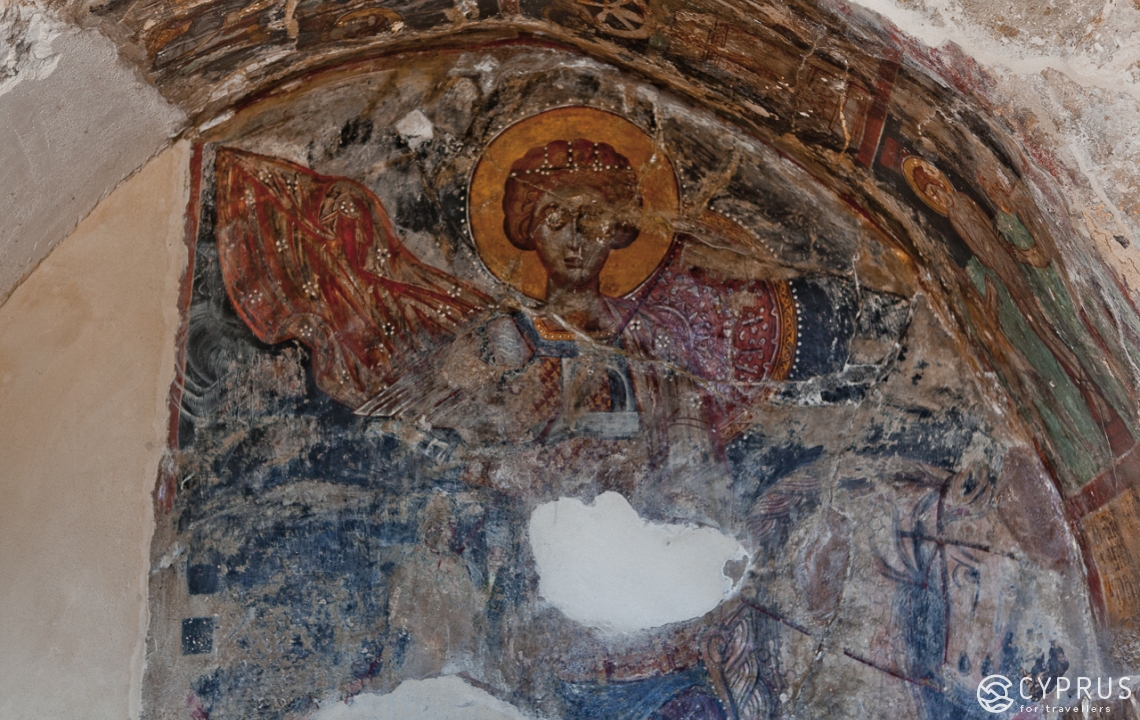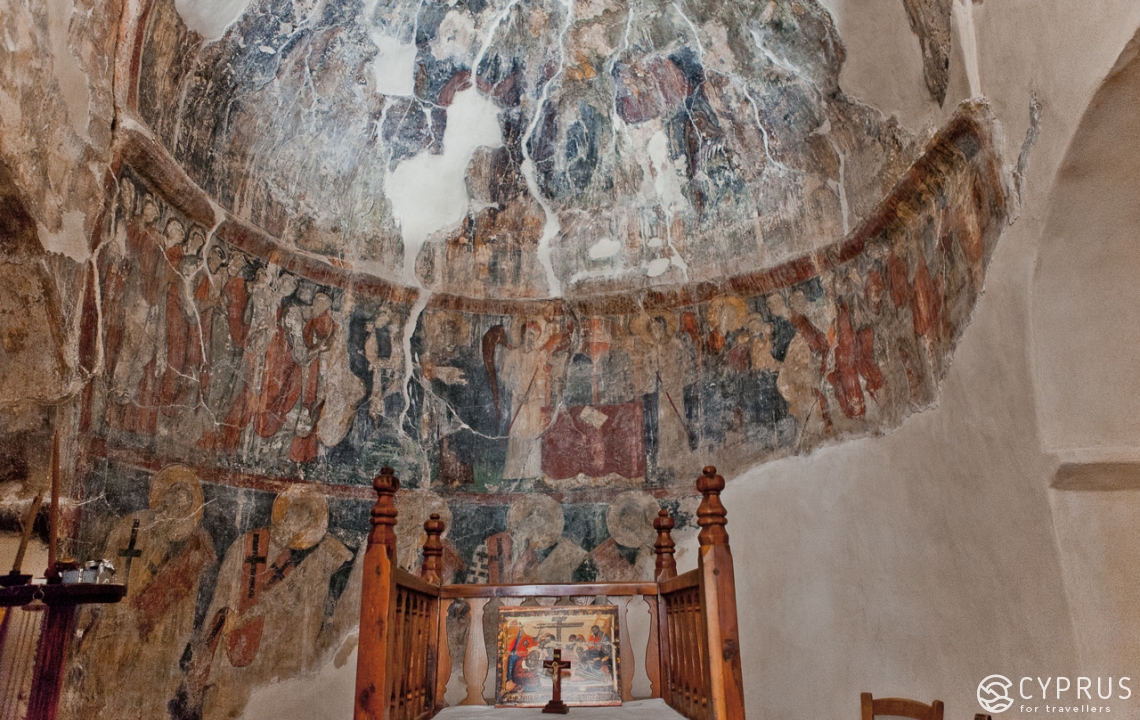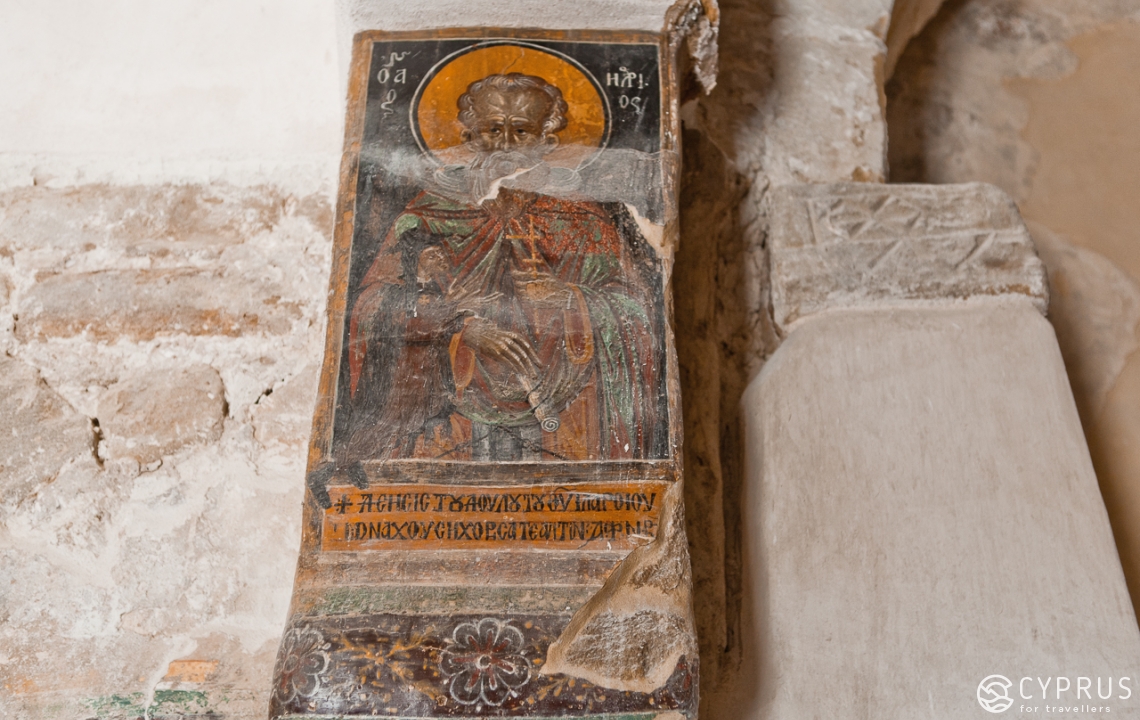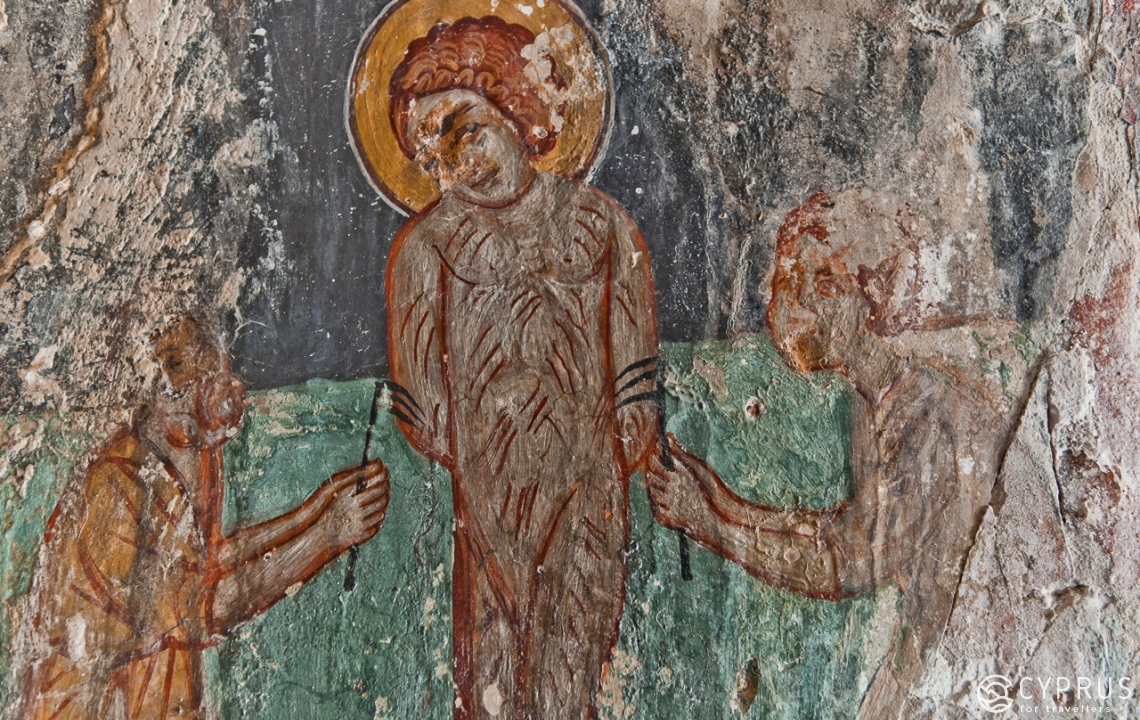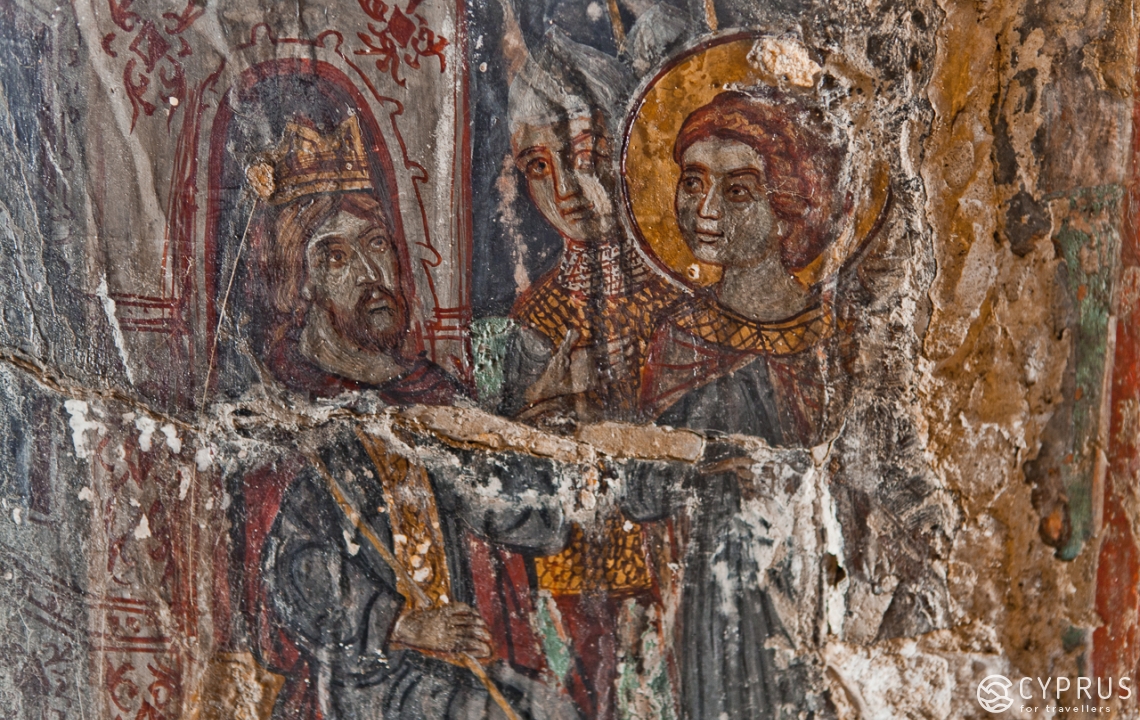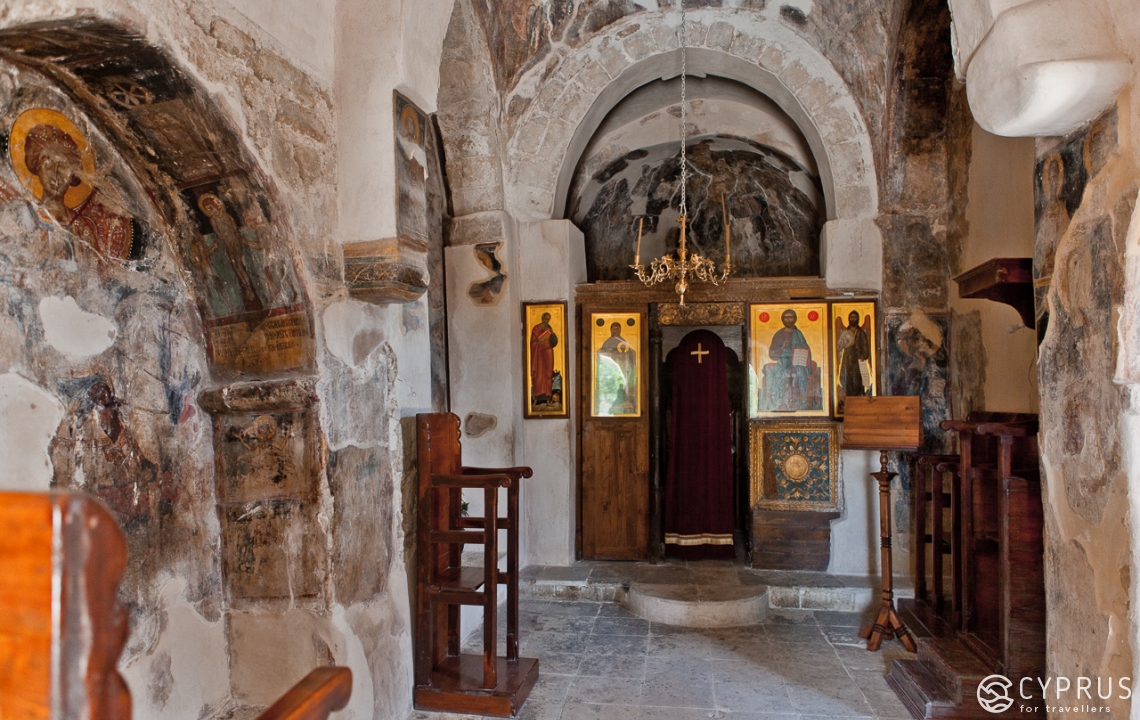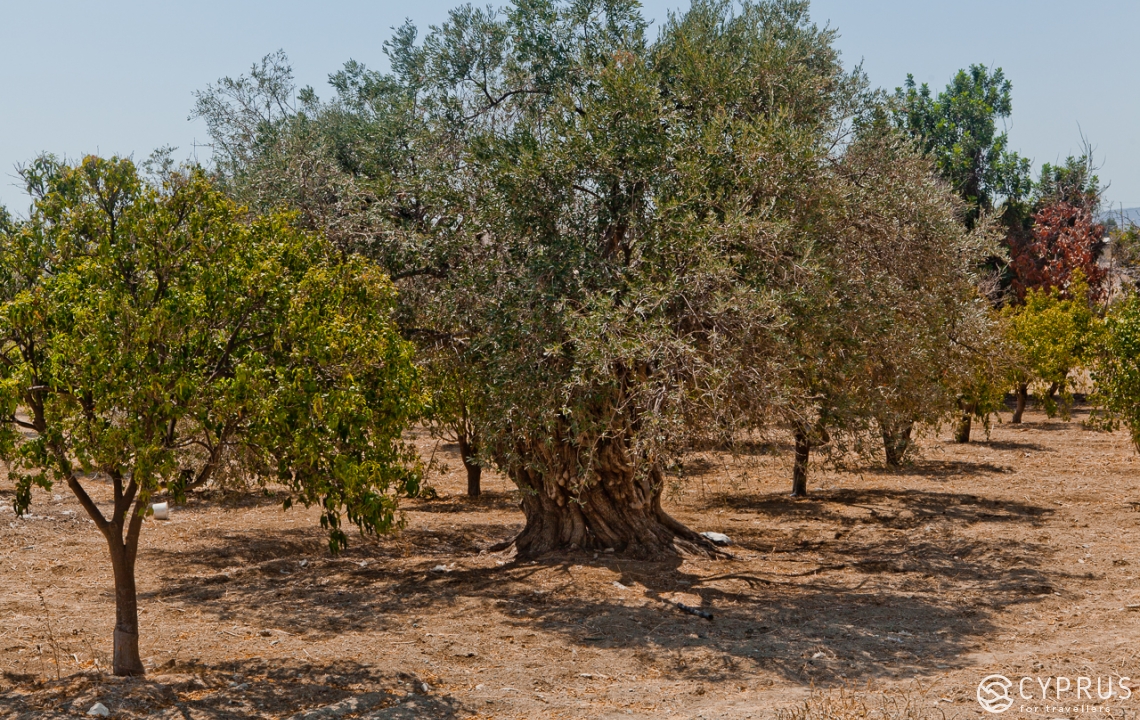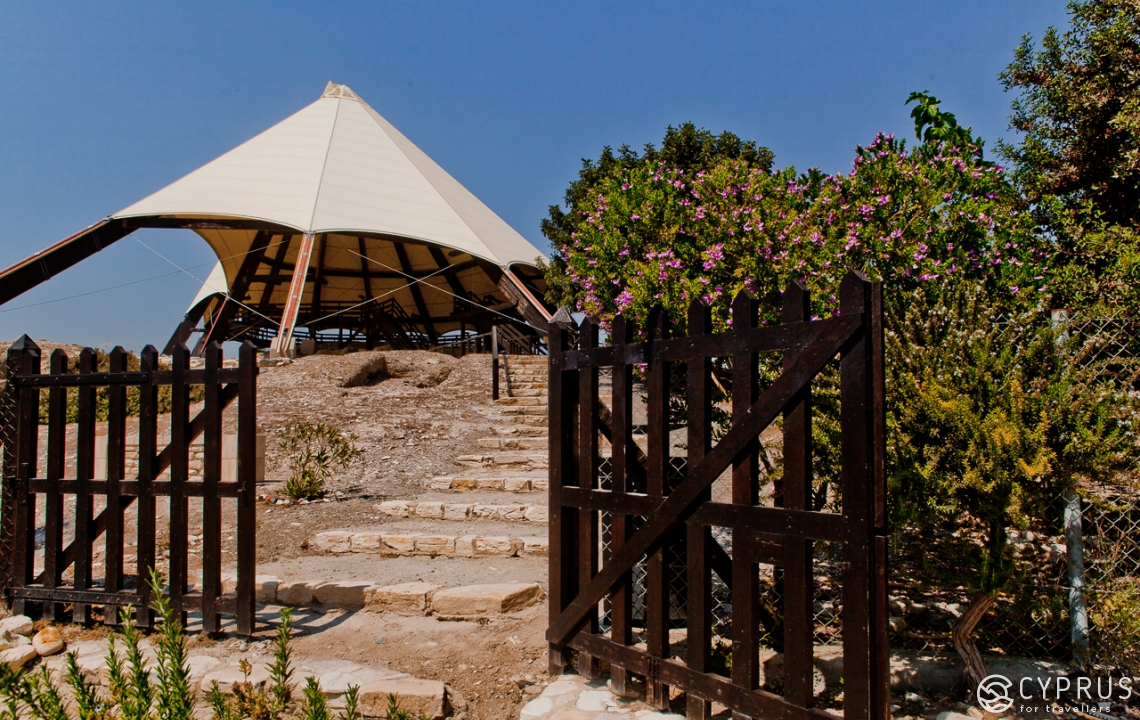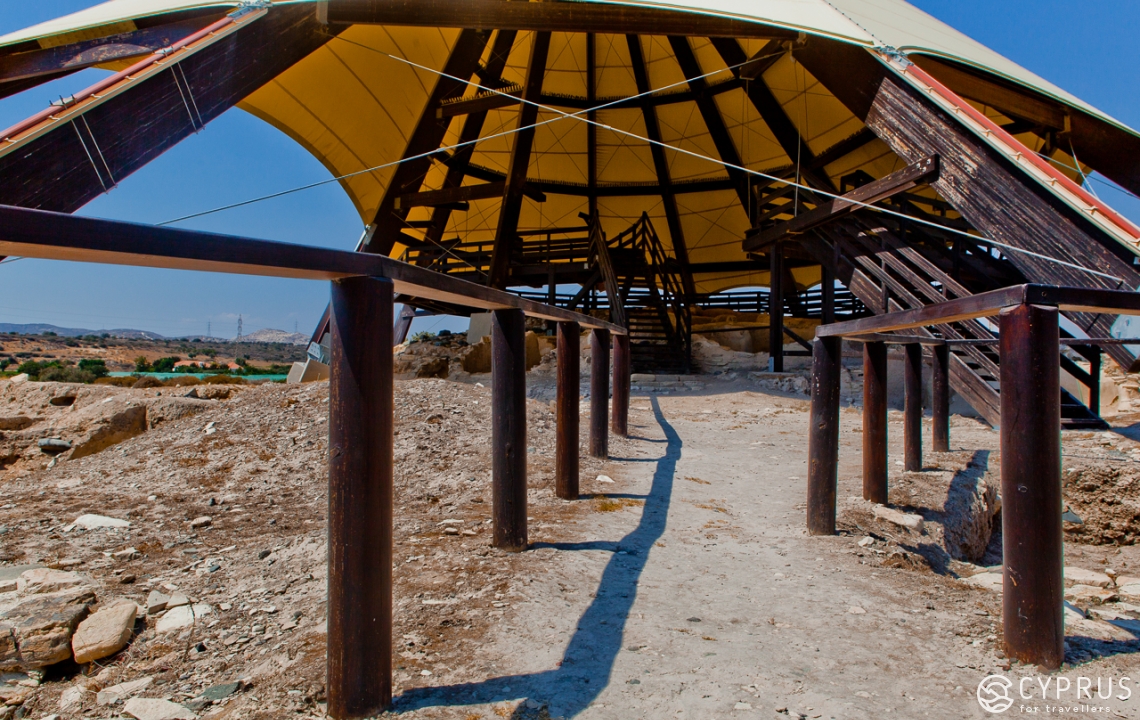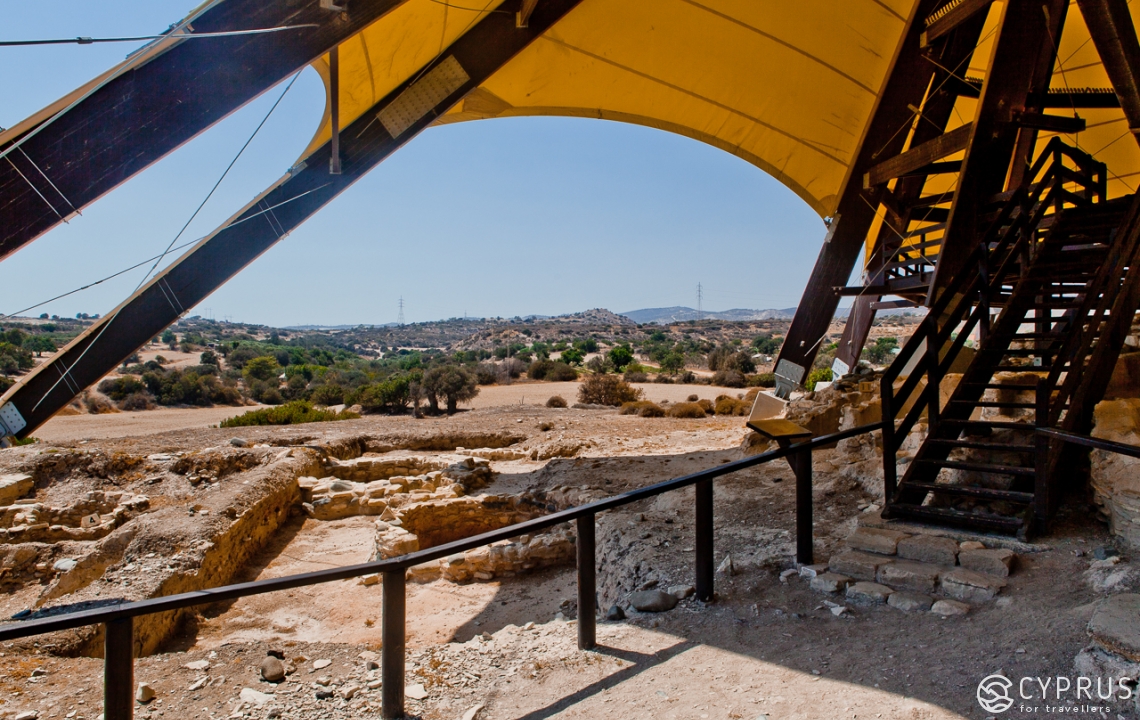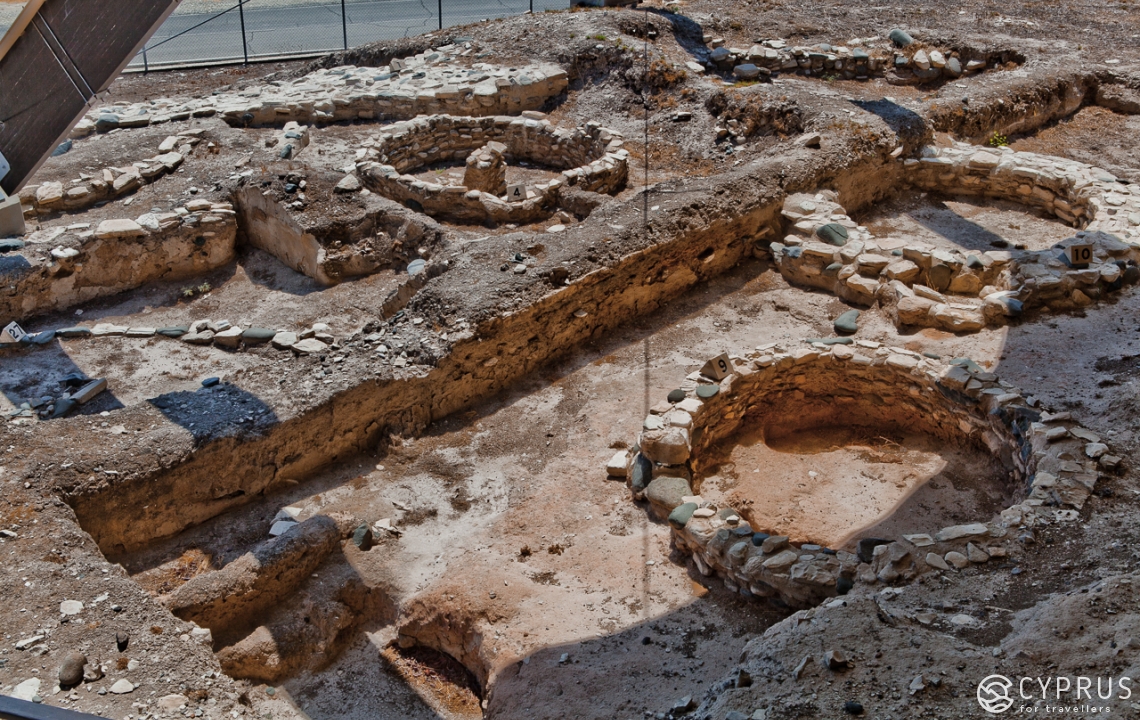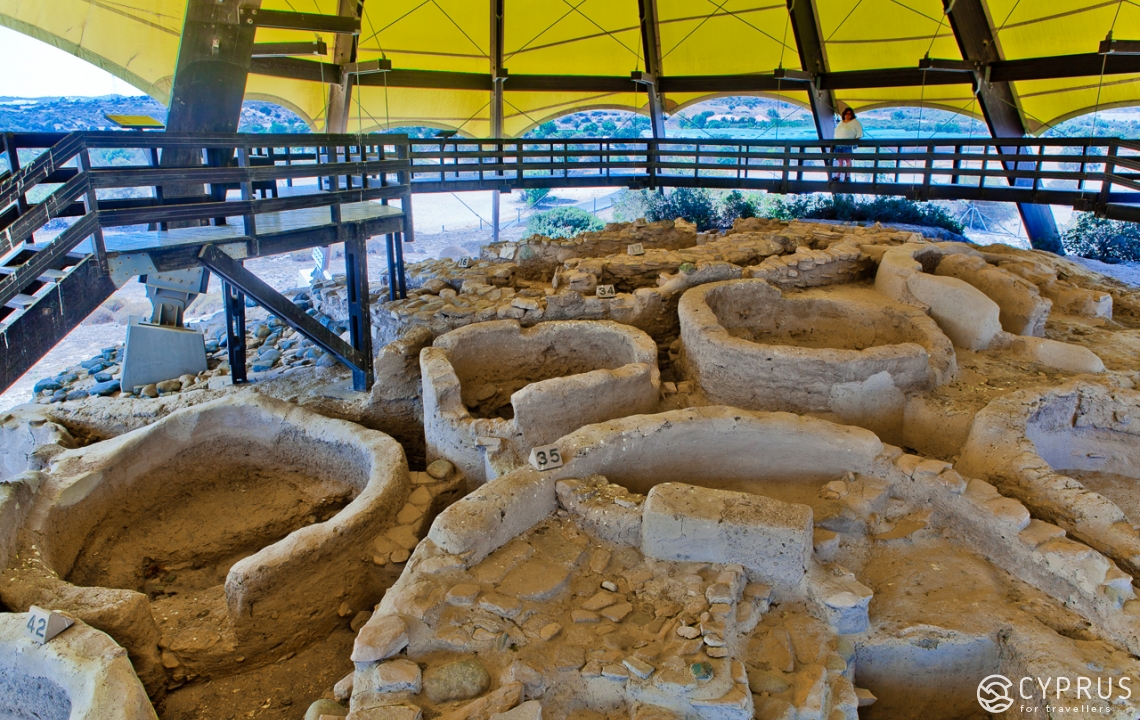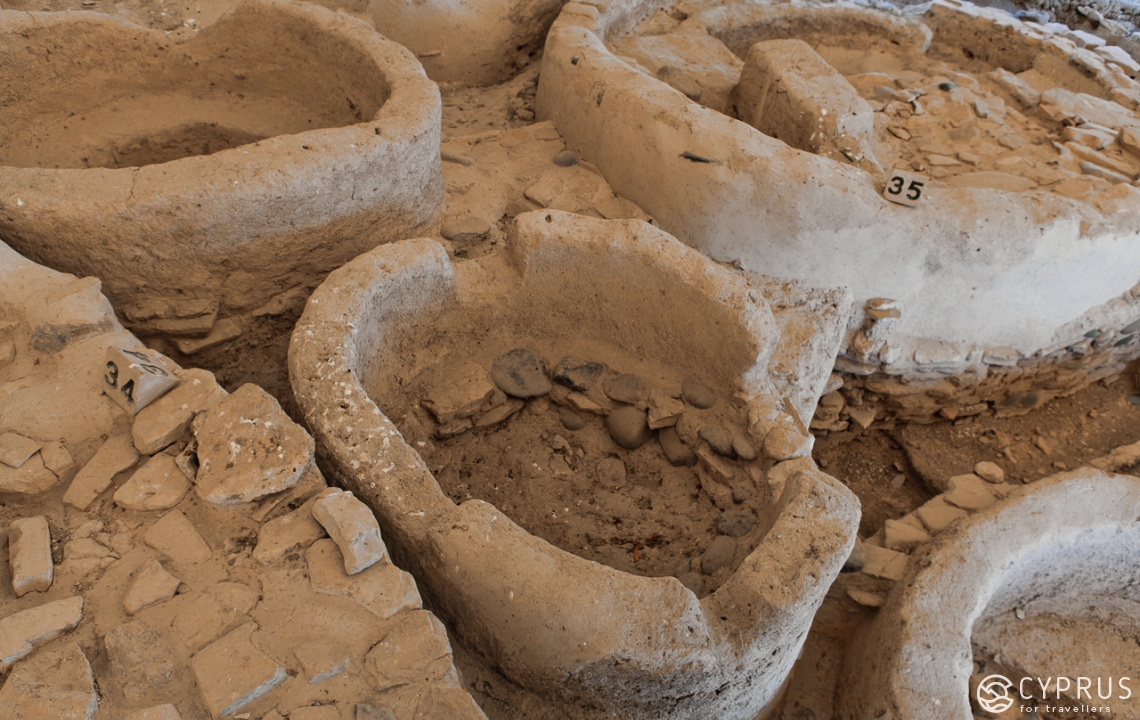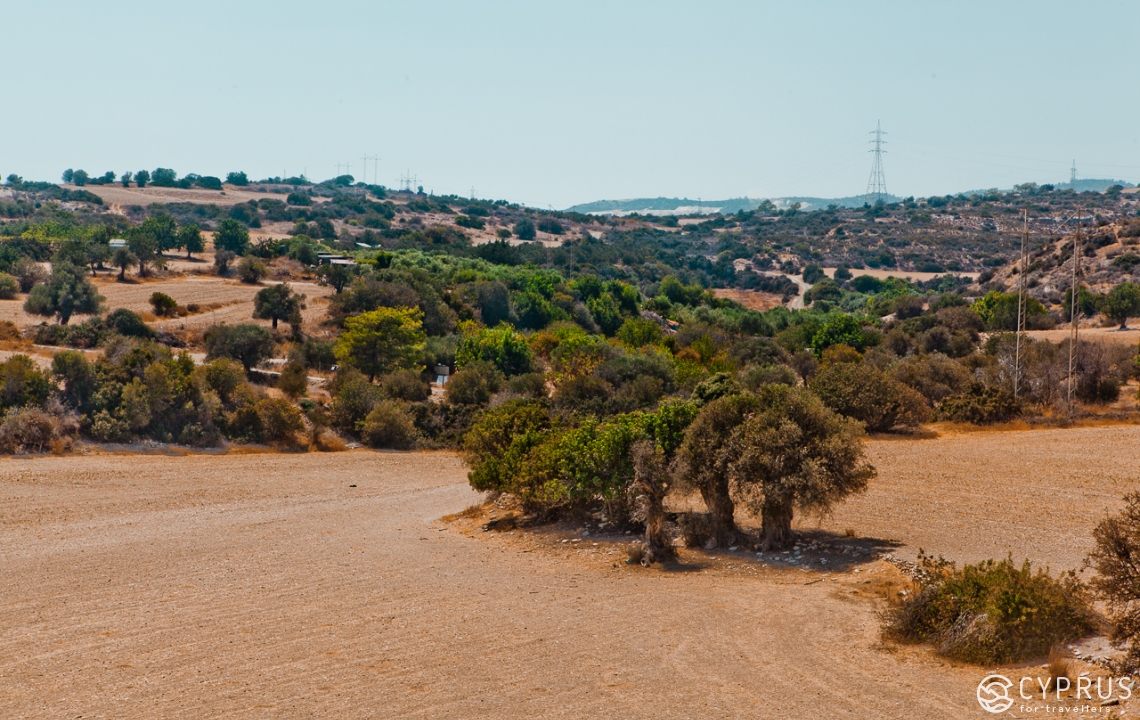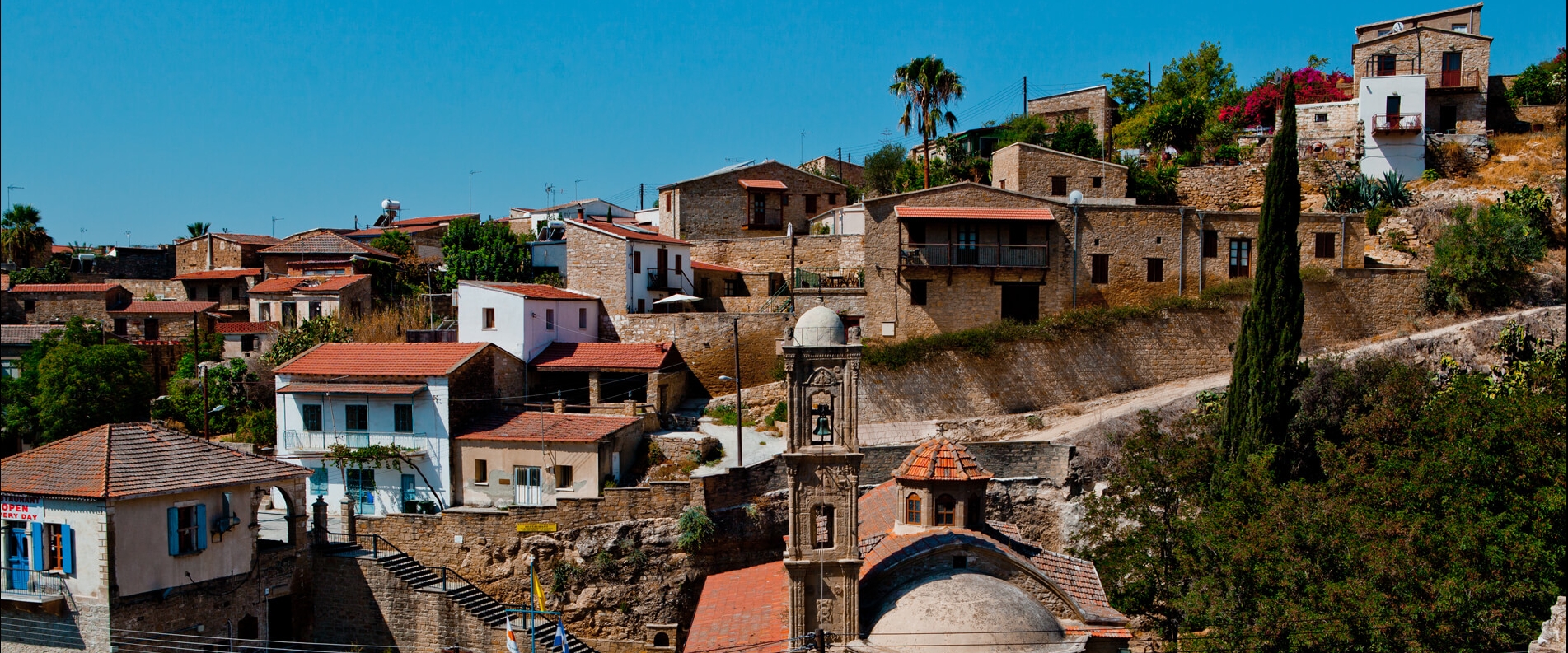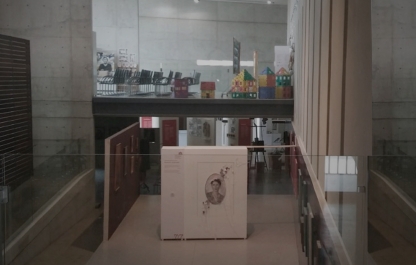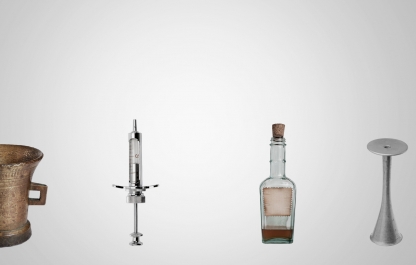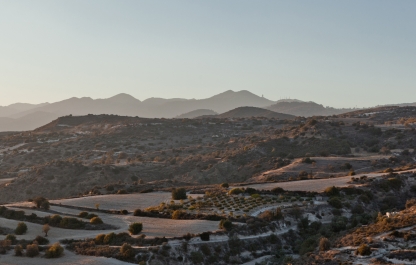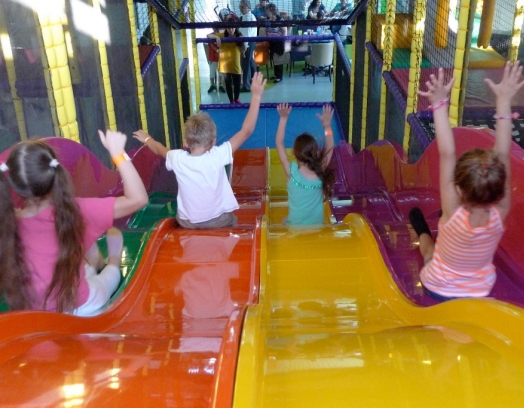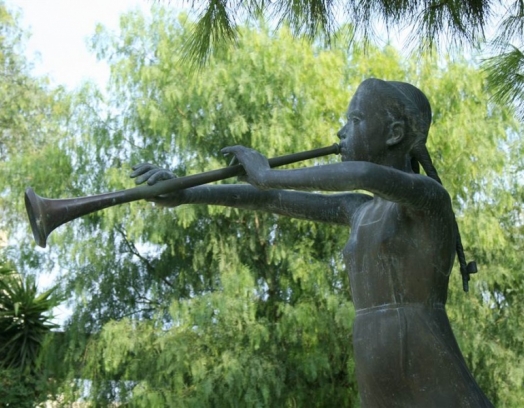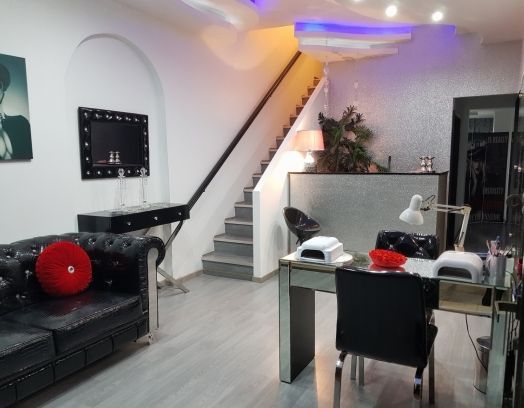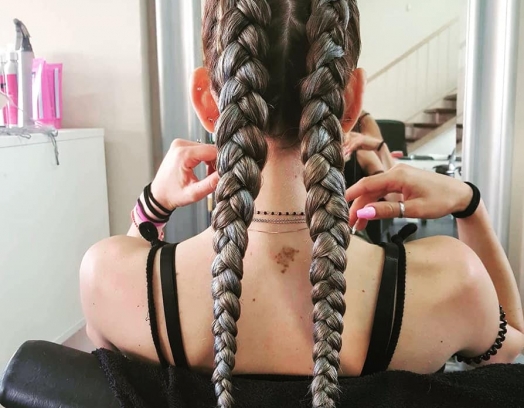The village is immensely picturesque: perched on the hillside on both slopes of the valley along the former riverbed. Until 1974, there were a lot of Turkish Cypriots living in Tochni. They were later forced to leave the village after the division of Cyprus. Today, it has a population of 400 made up of Greek Cypriots and foreigners. There is a primary school for 55-60 students. Located between Limassol and Larnaca (about half an hour from both cities) and 40 minutes from Nicosia, Tochni attracts tourists, active holidaymakers and fans of antiquity all year round. While it is pretty far from a lot of popular destinations, it is not completely cut off: it's just a short trip from here to almost anywhere in Cyprus.
Where to stay: Modern-day Tochni is a popular village for agrotourism, something that is on the rise across Cyprus. There's accommodation for every taste in one of their traditional houses open to tourists. Cyprus Villages Ltd offers studios and apartments in renovated traditional stone houses with free Wi-Fi.
For those interested in renting: There are traditionally-furnished rooms on offer with ceiling beams, and balconies, terraces or patios overlooking the village and the surrounding hills. Their fully-equipped kitchens have a mini-fridge, a stove, and a coffee maker. Satellite TV and a hairdryer are also available on demand. There are swimming pools (shared and private), and they offer lunches and dinners in the taverns on site, where they serve a buffet breakfast, traditional Cypriot dishes and other specialities.
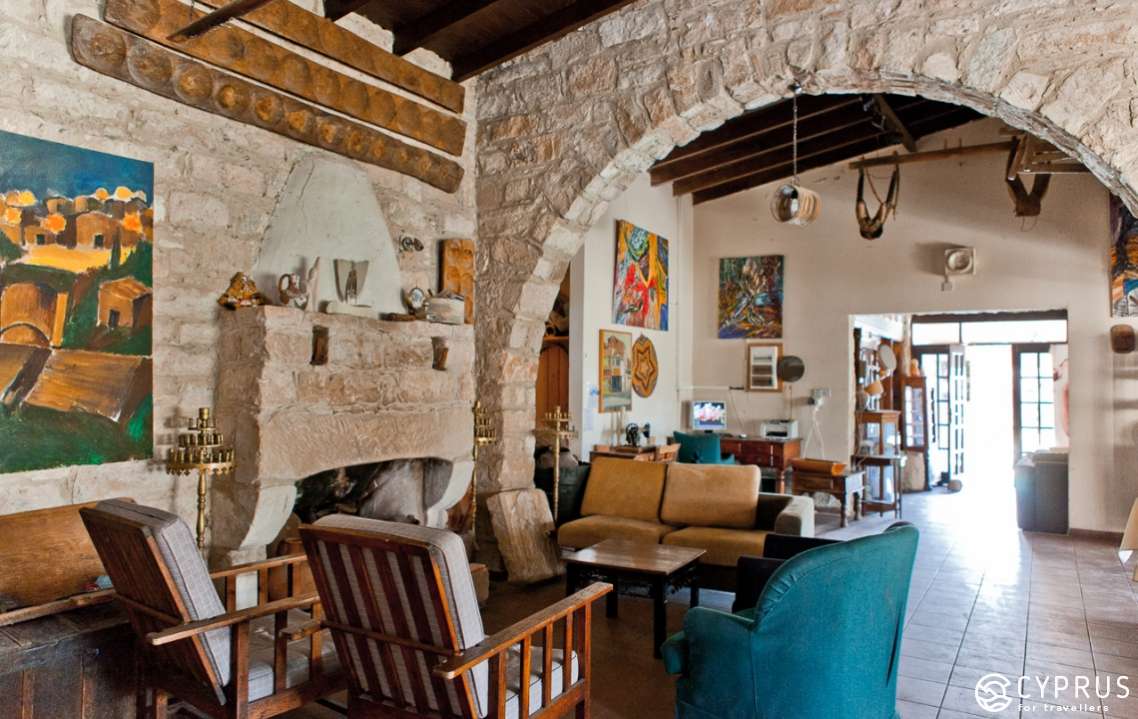
Mr. Sofronis Potamitis, director of the Cyprus Villages agrotourism company warmly welcomed us and then invited us to go for a walk. He is well-known among the locals and a friendly face for all those who've ever been here:
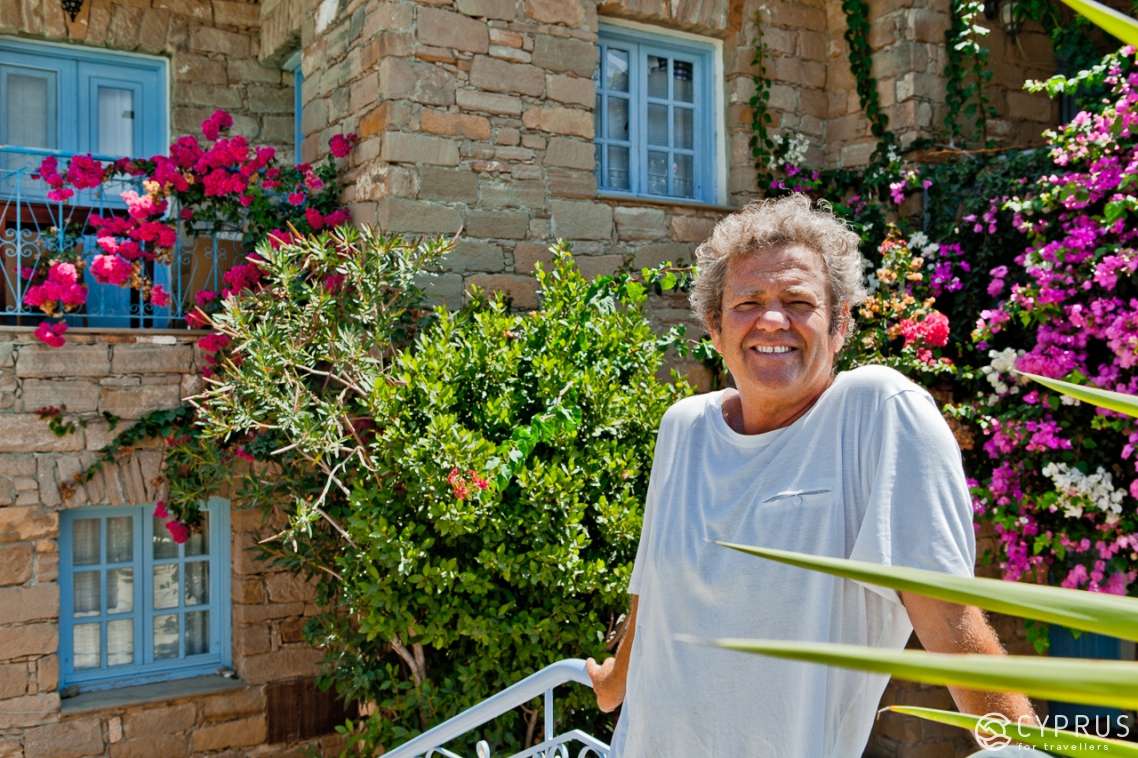
“With 30 years of experience, our company has been working with tourists from a range of countries from all over the world all year round for the last 12 years. We've brought together three villages in the area: Tochni, Kalavasos, and Psematismenos. As you can see, we have traditional houses here and a lifestyle to match. Each season is special and we always have something on offer for our guests. Right now, (our conversation took place at the end of summer) everyone is welcome to join us in the morning to go fishing or gather the harvest. We're picking ripe figs and watermelons at the moment. After all, did you know there is something ripening in Cyprus all year round? We’ll also pick oranges, mandarins, and other things here... Then, in the morning at 8:00, the others who are up with the larks are taught cheese-making (halloumi is a traditional Levantine cheese). In the late autumn we will be involved in the production of olive oil and will teach our guests how to cook Cypriot cuisine.
Cyprus Villages cooperates with partners and organises joint wine tours for groups of wine-lovers in the mountainous areas of Troodos. Our other partners, from Russia and Ukraine, run yoga classes and art expeditions that cater for both pros and beginners. We're now starting piano lessons.
Our bike race partners are professional athletes from Germany, Holland and members of the Russian National Team: Cyprus' largest bike station (with 300 bicycles) is in Tochni. Their peak season is the end of winter: February.
Family groups go kayaking, diving and snorkelling. We also offer them donkey and horse-riding tours.
What's more, we organise group tours to the part of Cyprus occupied by Turkey for all those interested. It's a region rich in cultural monuments from the Lusignan era, etc. There are also several eco-settlements there in the Karpass region.
So, we really have something for everyone: if outdoor activities are not your thing, you can always sit on the terrace of one of our traditional houses and just read your favourite book and soak in the tranquility of our peaceful rural life or try out new dishes you haven't had before.
If you're wondering about the nightlife... whatever you can imagine, we have it: not every evening of course but we organise dance evenings and musical concerts every month and invite professional artists and musicians from Cyprus and abroad.”
Location: Cyprus Villages is 7 km from the popular Governor’s Beach and 35 km from Larnaca International Airport.
Cost: 30-80 euro a day
Contact Details: (+357) 24332998, 99563299,
www.cyprusvillages.com.cy
email: reservations@cyprusvillages.com.cy
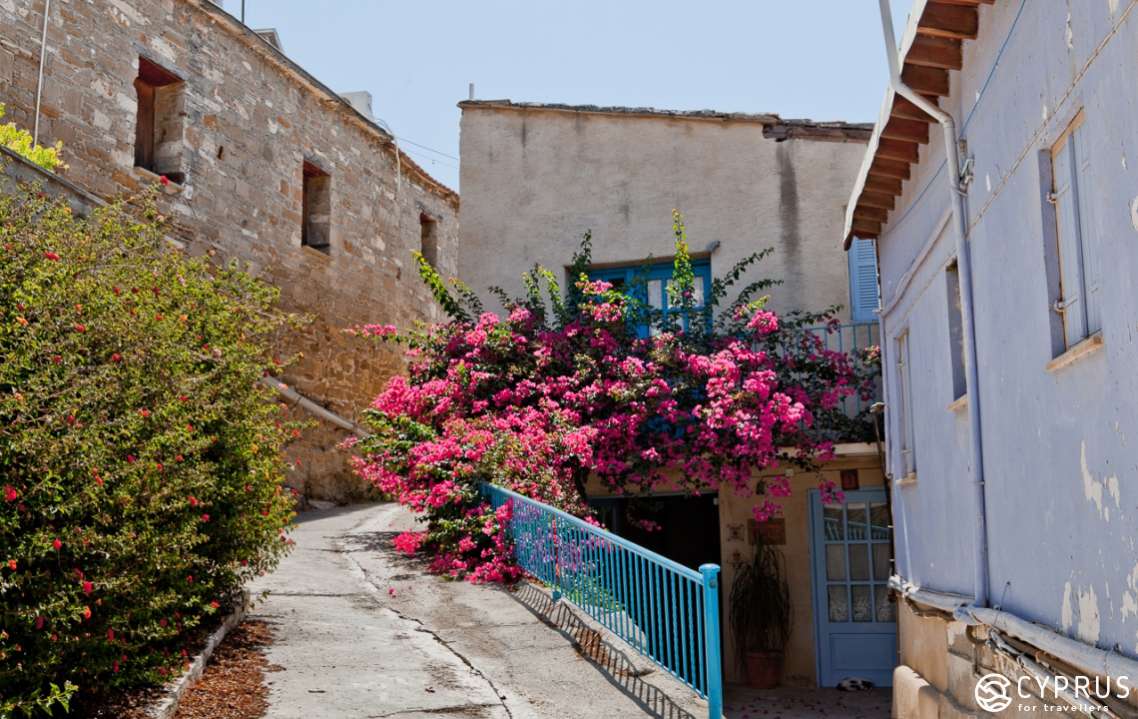
We went on a tour of the village with Sofronis setting off from the main tourist meeting place in Tochni (the veranda of the restaurant of the administrative building) where we started our climb down to the historical part.
There is where new friends also joined us: Maria, a young folk singer from Russia, and Christian, a journalist and editor-in-chief of the tourism magazine Rural Romania. We got to know and talked with them later on the tour...
The Church of the Saints Constantine and Helen
The building of the modern-day church was built relatively recently, in 1999 on the site of the former church. It is busiest here every May 21 when all the locals come to celebrate the Day of Veneration of St. Helen and Constantine. This day involves a feast day with worship, a festival and a fair. Like many other monasteries and churches in Cyprus, this site is linked with the names of St. Helen Equal to the Apostles (250-330) and her son, the Roman emperor Constantine I (the Great, 272-337). In 326, the empress, who had accepted Christianity thanks to her son's influence, made a pilgrimage to Jerusalem to seek out the shrines. Incidentally, Eusebius of Caesarea, the author of “The Life of the Blessed Emperor Constantine”, refers to Helen in those years as “an old woman with an extraordinary mind who travelled to the East with the speed of a youthful woman”. Upon her return, she visited a lot of places in Cyprus and founded several churches where she left parts of the relics she had acquired. These places later went on to become sacred. Historical sources record that the first church in Tochni was built at the order of St. Helen.
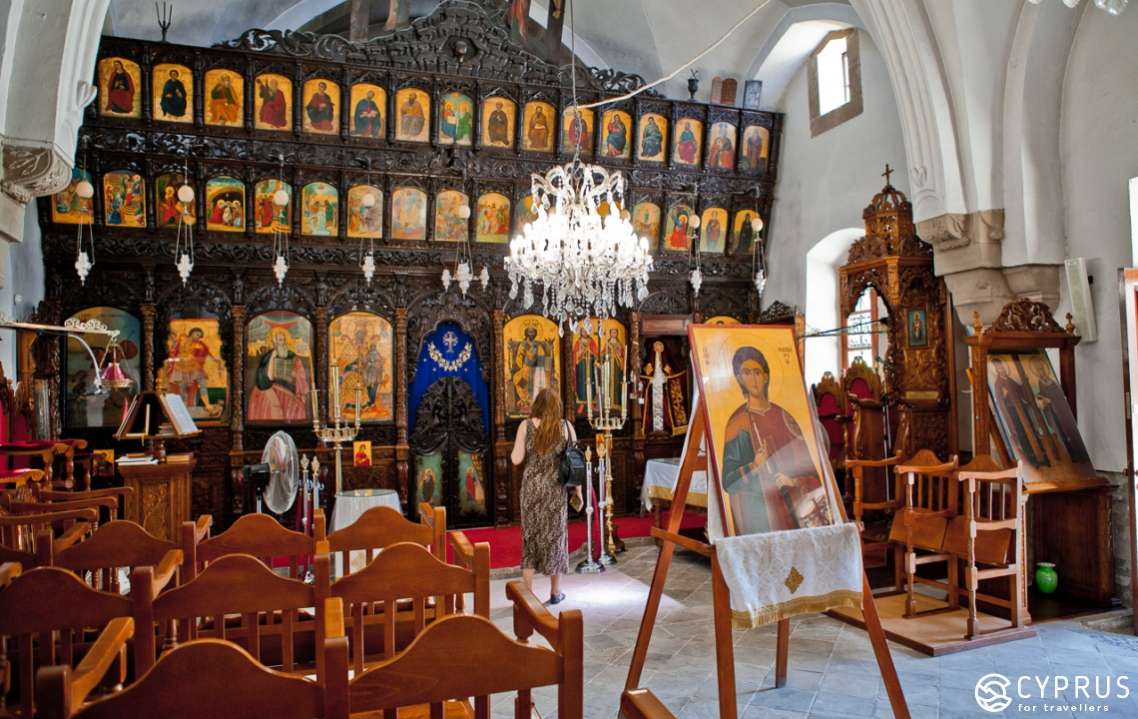
Opposite the church there is a museum of ancient icons run by Father Pavlos. Most of the exhibits date back to the 15-17th centuries. One of the most striking pieces is the large cross with the image of St. Helen and Constantine made of gold.
Admission is free.
Above the museum there's a taverna and a small cafe. Not far from the church, you'll find the ruins of an ancient Roman chapel.
-
Further reading: the work by Leontios Machairas (c. 1380 — early 15th century): The Chronicle Concerning the Sweet Land of Cyprus. It spans 5 books and is the main historical source on Cyprus from 1190 to 1432 as well as being a significant influence on the future chronicles of the island. Machairas recounted the legend that says the ancient settlement where Tochni now stands was very tempestuous before Helen arrived. Insidious demons were constantly interfering in the calm, everyday life of the villagers and playing dirty tricks on them. One day, Saint Helen saw a beam of light that reached the heavens. When she approached it, she found a cross on the riverbank and heard a voice from the up above commanding her to build a church in a place that "will be called Tochni”. She ordered that a well be dug and the 40 demons who lived by the river be imprisoned there. The well was filled with a heavy rock fragments and a bridge was built over it. The church was built on it. The empress gave a small part of the Holy Cross, framed with silver and decorated with gold and pearls.
-
Inside the modern-day church, you can see a carved iconostasis with a magnificent carving, traditional of many Cyprus churches, and ancient icons ... in the lower part of the church (next to the altar) there is a silver cross with an imbedded fragment of the shrine, which is still venerated by believers to this today. At the crossing in the centre there is an of a two-headed eagle — the symbol of the Byzantine church.
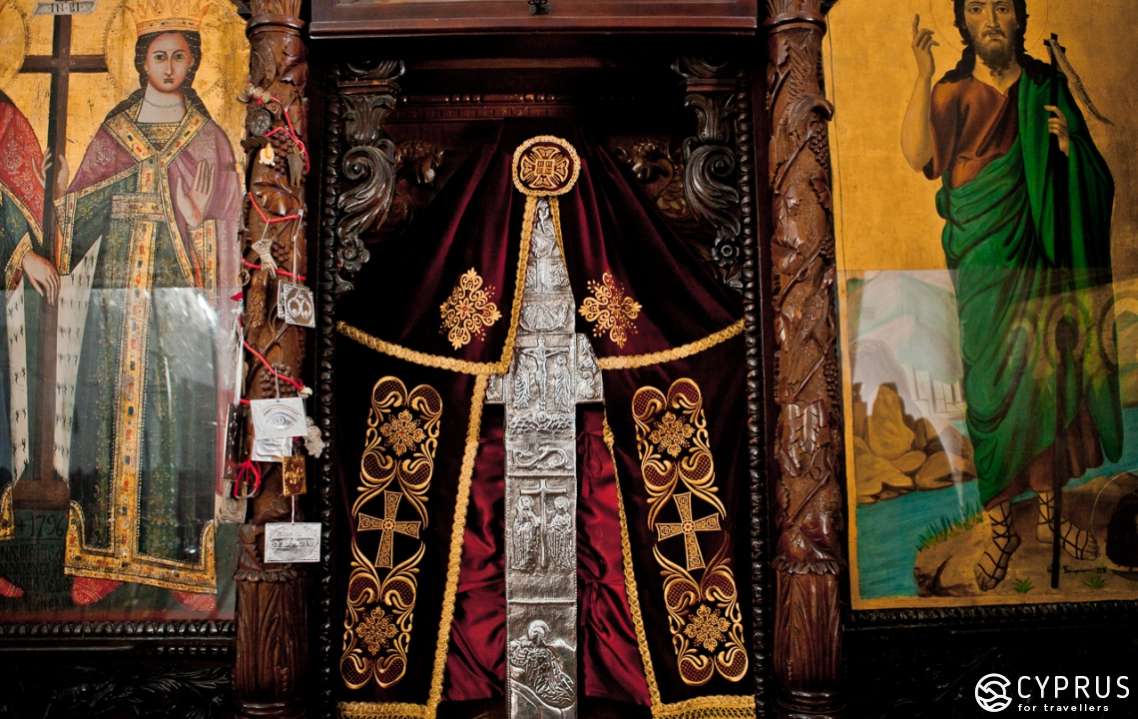
If you climb up onto the street above, you will find a curious little souvenir shop selling hand-made gifts: locally produced paintings, cheerful pottery, Turkish delight, icons, and lamps.
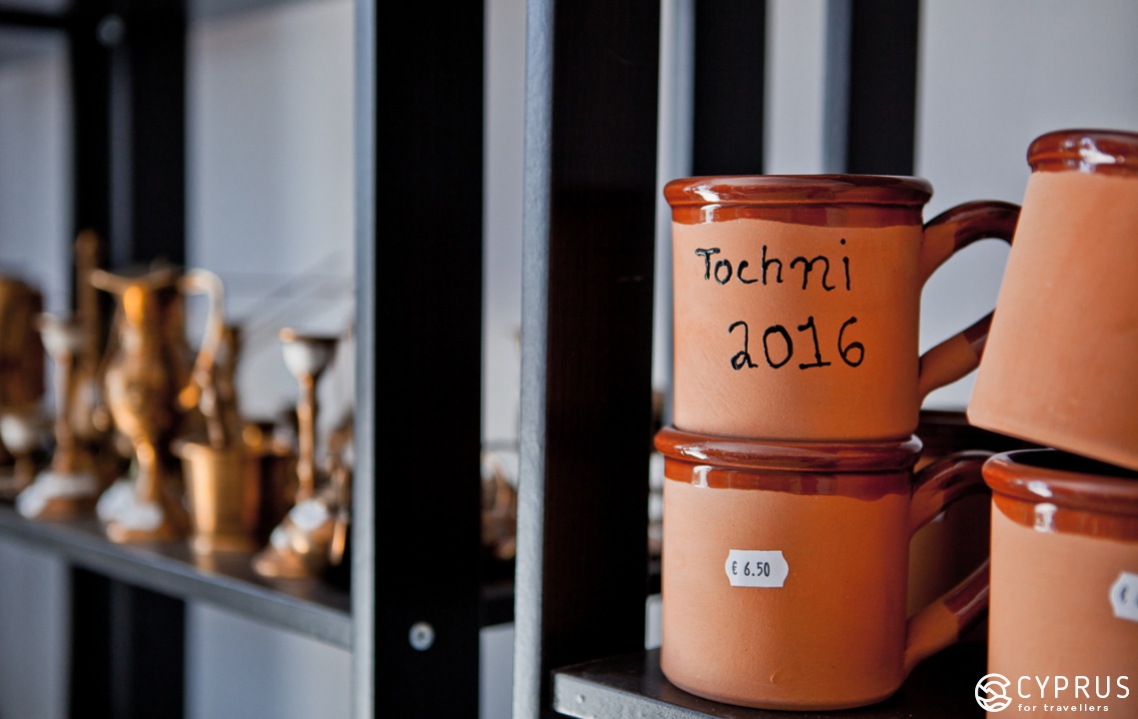
We appreciated the traditional local architecture and walked through the streets, which were made lush by the stunning vines and trees in blossom at this time of the year overflowing from the gardens of local residents in competition with impressive cacti in their quest to reach the sun. They are also known as cactus trees in Cyprus and their fruit is really tasty and therefore very popular.
What kind of traditional houses are on offer for tourists in Tochni? They are generally small 200-300-year-old manor houses in the centre of the village. They have been renovated but their historical features have been preserved. As such, they are equipped with the necessary modern conveniences. They have their own courtyard. The main 2-storey stone house is connected to its wings by passages and galleries. The lower floor is open plan with an exit out into the back courtyard or (even more often) the garden with a swimming pool. The main building material is ashlar stone. The views are picturesque panoramas of the village, the surrounding hills, and you can even see a blue sliver of the sea. Rooms: from 30 euro per night.
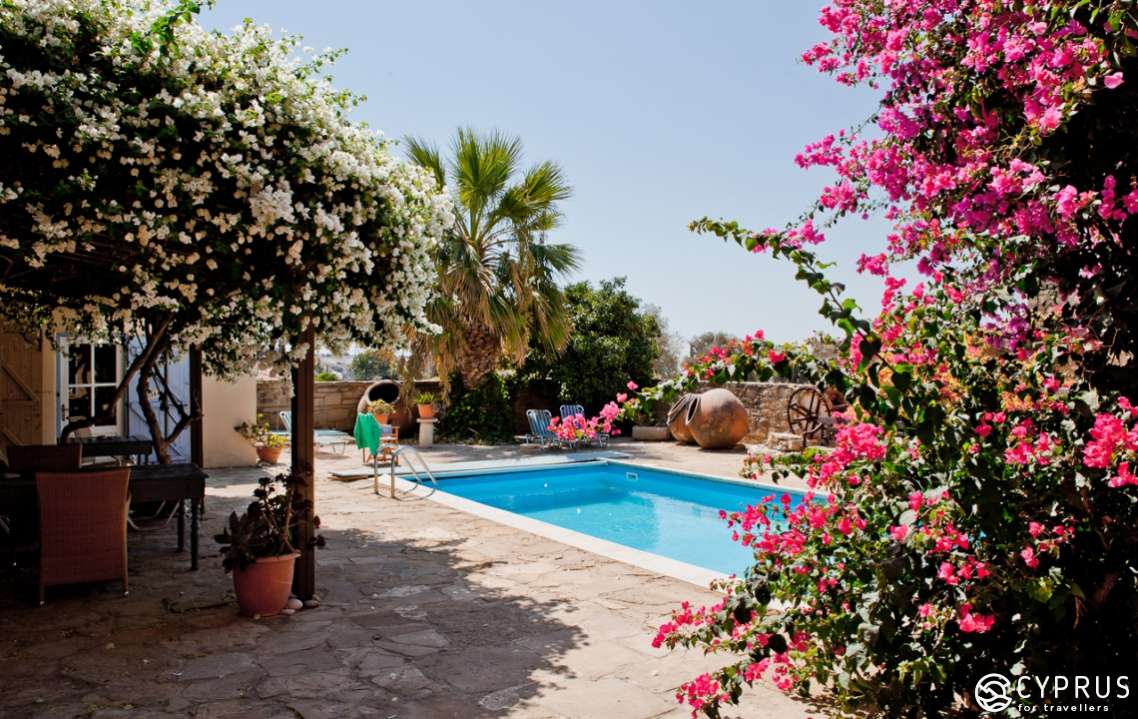
I asked our guide: does the state help maintain the traditional way of life in these houses as well as carry out repairs and reconstruction work as needed? Sofronis replied that 50% of the costs are cover by the state in this case. What's more, in recent years, more and more buildings in Tochni are being faithfully restored with the aim of preserving their original appearance: this even includes external renovation. The layer plaster that was applied more recently was knocked off to expose extensive antique masonry.
We stopped by one of the houses available for rent.
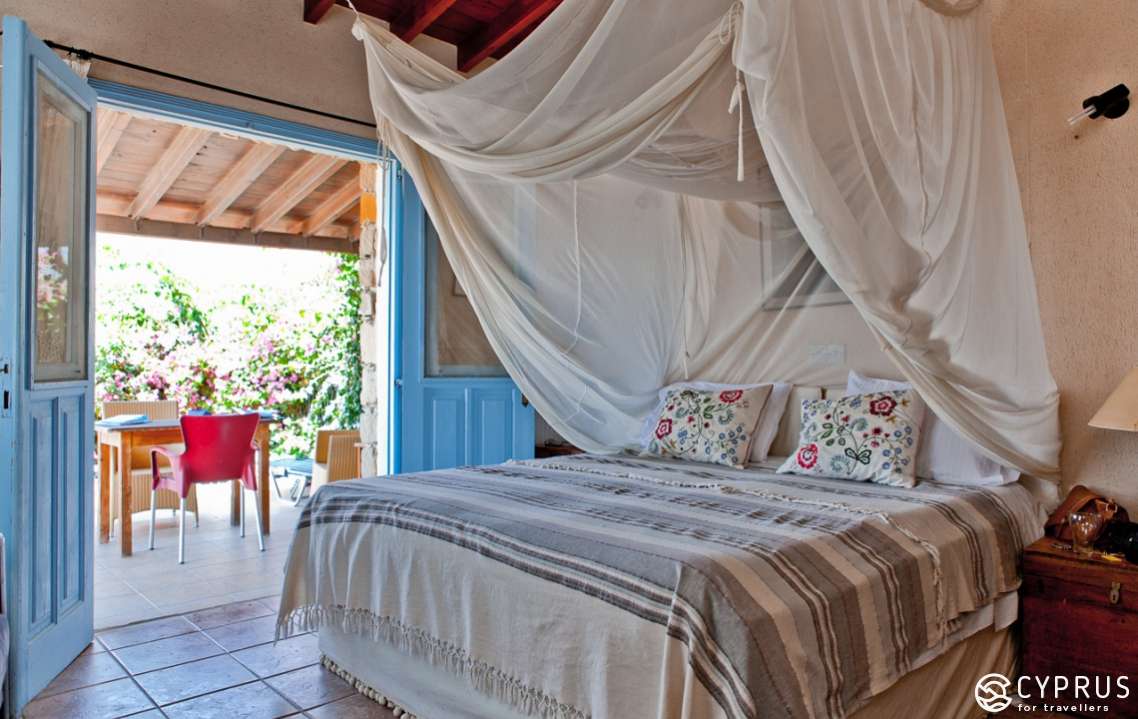
Interview with a guest
Our first guest, Maria, who put on an impromptu yet perfect performance of the Russian folk song “I love Ivan for that" at Sofronis' request during our walk, told us about herself and her impressions:
My name is Maria Pogorelova and I'm from a town called Pushkino in Moscow Region. I am a traditional folk singer.
— How long have you been singing?
It's been four years since I graduated from the Moscow Regional College of Music named after Prokofiev. I'm already a qualified professional and leader of the national team, which itself is still an amateur group. We have 15 people in total...
— Maria, do you perform regularly?
— Quite often, we were at the Delphic Games ... and came home with medals. Folklore is gaining more and more popularity and it seems there is real interest in it in a lot of countries. People are starting to show an interest in national dress, songs and dances. They even devote their lives to it.
— Are you in Cyprus for the first time? What do you think?
— Yes, I got here yesterday.
I'm staying in a village near Tochni called Kalavasos — it's wonderful! I particularly like that I'm living among the local people: everything is clean and beautiful. The people here really care about their village and how it looks!
Of course, if you come here, it's best to have a car so you can get out and about easily... that's why I haven't gone very far yet, but I want to.
— What can you say about the country in general?
— I had been to Crete before coming here and I think there are some similarities. However, as a folklore fan, I can see some specific differences: they speak very differently here, with a local dialect. Also, it's really interesting to see local dances and listen to local music that hasn't been stylised and modernised.
I really recommend coming to this village if you're in Cyprus: it has a great atmosphere!
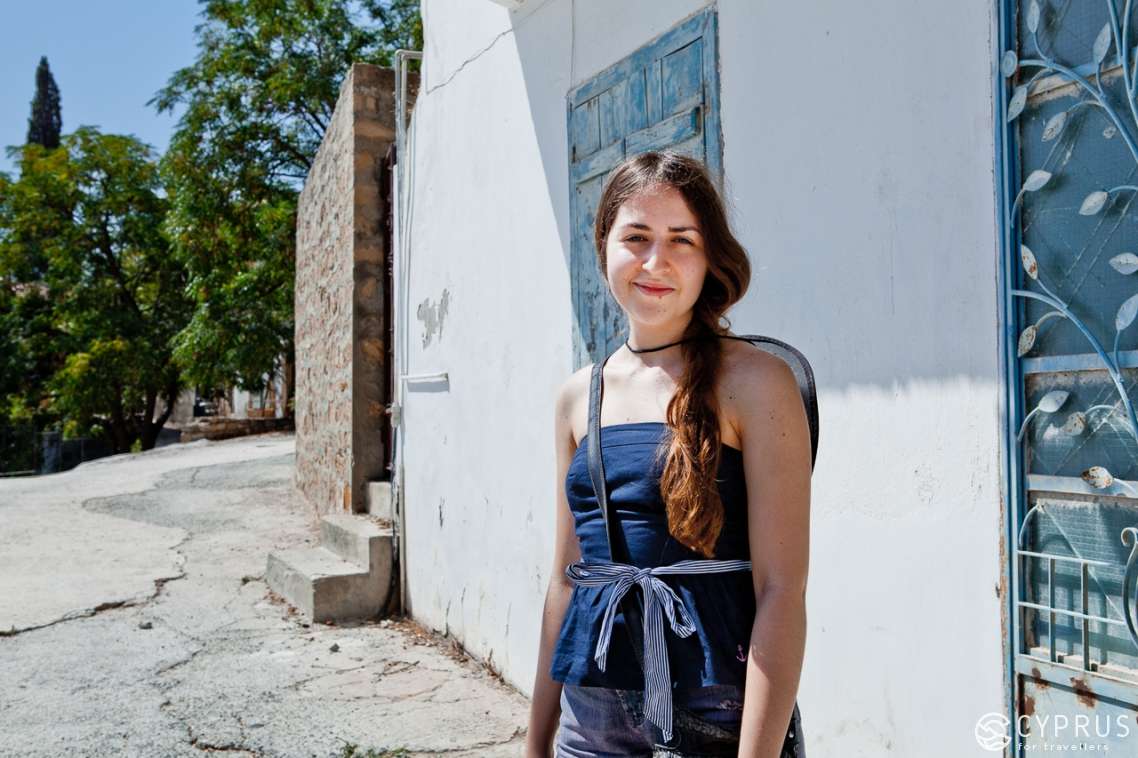
Loula's Farm: where halloumi is made
Sofronis took us there by car. This is a real ranch, owned by the large and friendly family of Loula Euthimiou, a whole dynasty of cheese-makers and sheep farmers.
We got to see the production process of this famous sheep and goat-milk cheese first hand: First, the milk is curdled and drained. The resulting curd is put in a special tank and boiled. This makes a kind of ricotta, which is put in a press to remove excess water and then cut into pieces (portions). Then, they take coarse salt and sprinkle it over the young cheese. They also add dried mint (for its antibacterial properties — it gives the cheese a longer shelf life). It is then packed with brine ... if at this stage they use the whey that was drained earlier again, it produces a different type of cheese, anari. Its texture can be very varied: it can be very soft or even firm. It depends on whether it was heated to dry it out during the production process.
Top tip: you can buy halloumi much cheaper at farms. At Loula's it costs just 5 euro a kilo, which is a whole lot cheaper than in the shops.
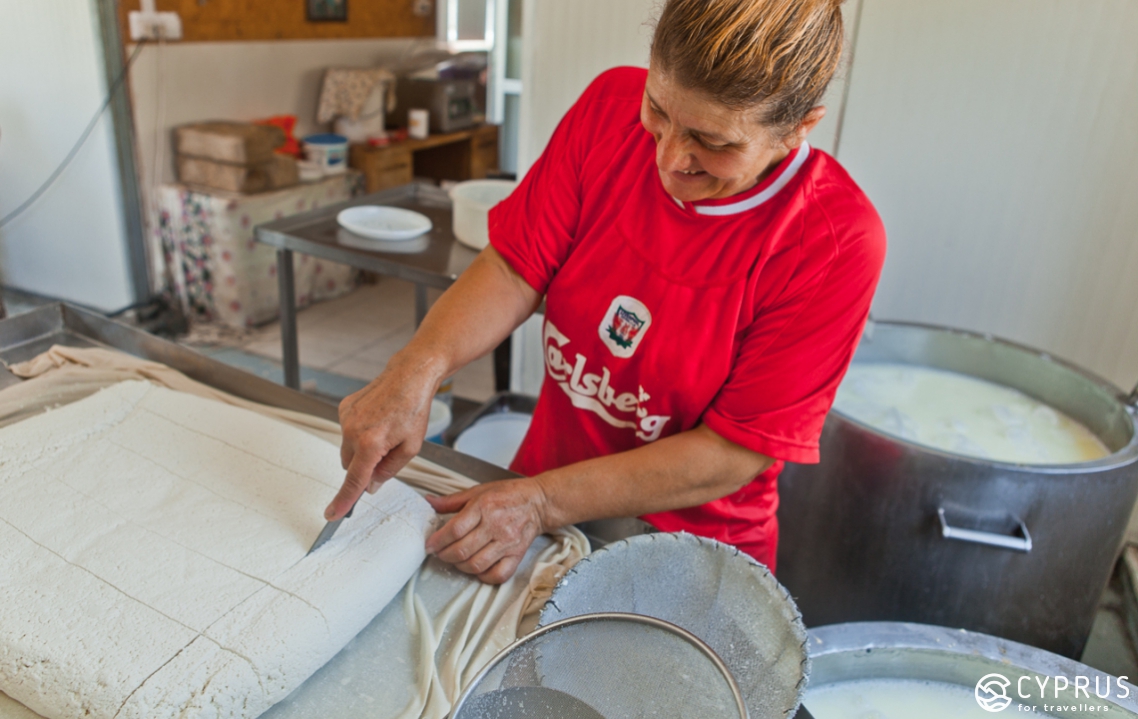
The Church of Panagia tou Kampou (between Choirokoitia and Tochni)
We returned from the farm and drove up to the 16th-century church, which is surrounded by ancient olive groves (translated from Greek, its name means Our Lady of the Fields). Looking around, you can see the ruins (and plan) of buildings dating back even earlier to the 6-8 centuries. Mr. Potamitis told us the church is still open and weddings are still held here. When you go inside, you'll see preserved fragments of 12th-16th-century frescoes. They were preserved in layers. After the earlier layers were destroyed (presumably in a fire), a thick layer of plaster was applied over the top and new images were painted.
There are also fragments of preserved fresco painting on the dome. They are of great cultural and historical value, and are of considerable interest to historians. There is real sense of belonging and connection here just as in many of Cyprus' ancient churches and other historic buildings!
The church also has new icons alongside its ancient gates leading to the altar part, which have been preserved.
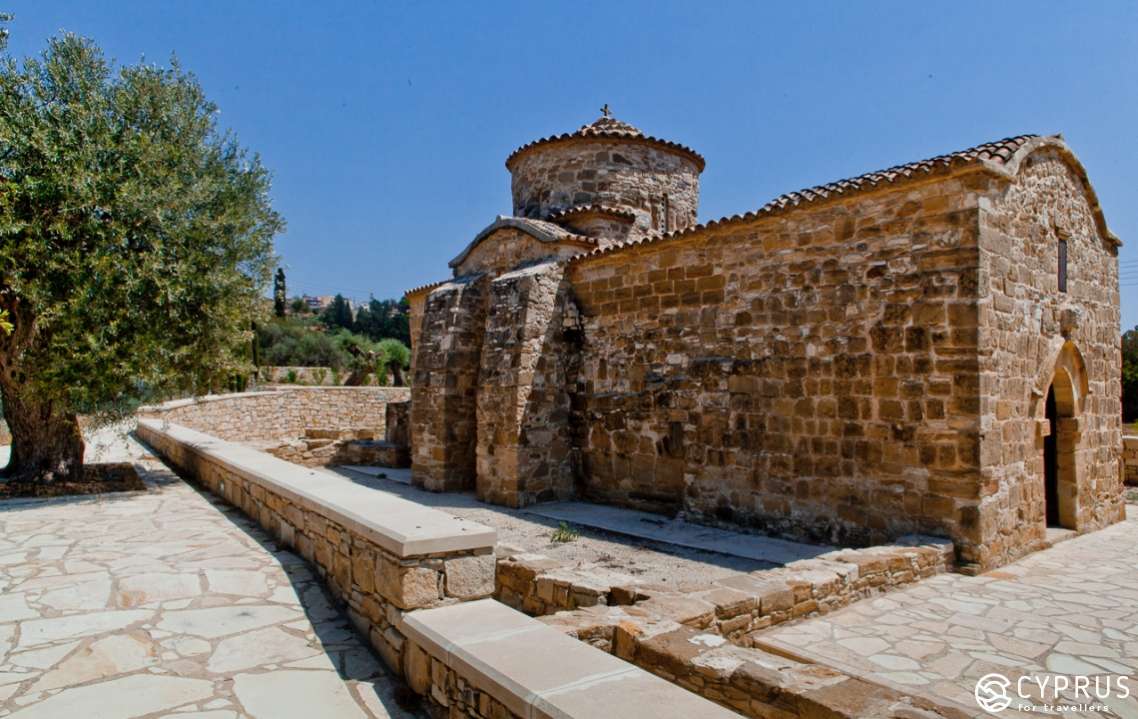
Another guest interview
Our second guest is Christian from Romania.
My name is Catan Christian Alexandru (32) and I'm from Romania. I'm a travel journalist and promote European agro-tourism: I mostly focus on Romanian agro-tourism of course. I also write about national arts and crafts, folklore events and holidays to make them more popular.
— Have you come to Cyprus for work or pleasure?
— You know, a little bit of both. I kind of go on "working holidays" (laughs). I was really interested in getting to know more about Cypriot villages and immersing myself in the life here. I've been here for three days and have been impressed by Cypriot hospitality.
— Christian, could you tell us what you consider to be specific to Cyprus? In your opinion.
— A lot of things remind me of Romanian country life: the way the villages are set up, some of the traditions... I'd heard a lot about the island's cuisine so I decided to focus most of my time on that :)
I want to tell everyone that they should definitely try and take part in some of the entertainment events and activities on offer to tourists here — Cypriots definitely have something to offer!
— Where do you think is the best place to stay to get to know the island better? In well-developed tourist towns or in traditional villages with their slow pace of life where it seems nothing has changed.
— Definitely a village! This is where you can see how the locals live from the inside and understand more about the country.
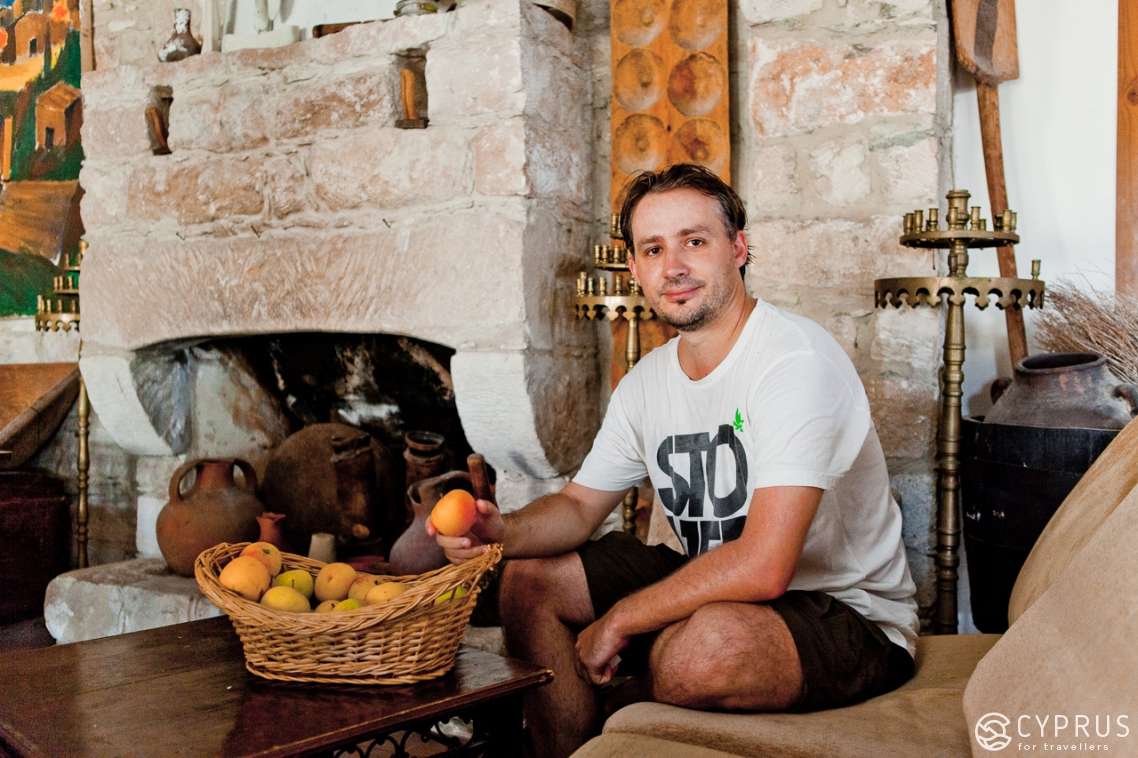
Our walk through Tochni came to an and, and we thanked Mr. Potamitis for his amazing tour that left us with a whole host of new memories. We said goodbye to our new friends Maria and Christian: They still have their "own Cyprus" to discover.
It is time for us to continue our explorations. We headed to Tenta (which neighbours Kalavasos), a famous archaeological site dating back to the Neolithic period, which is actually under a tent. Tenta in Greek means marquee or large tent.
Millenia of History: Tenta and Choirokoitia
In 1995, a wooden structure with a tent-like covering was built over the site where legend has it Empress Helen set up camp to protect the excavated Tenta settlement. Alongside round remains (stone mixed with clay was used as a building materials in ancient times) of buildings arranged in a spiral formation very close to each other, this is where the earliest anthropomorphic images were discovered in Cyprus: the figures with raised arms were painted with ochre on stone in 6-5 thousand BC. They are now in the Cyprus Museum in Nicosia. Incidentally, archaeologists believe the interiors of some houses were also painted with ochre. The same archaeologists are in the throes of heated debate about the roofs built in the Aceramic era.
Each of the settlement’s "exhibits", owned and controlled by the Department of Antiquities of the Republic of Cyprus, is assigned a number. Referencing its number, you'll find a description on a dais in the stands. You can learn more the historical research, archaeological finds, and ethnographic information about the people and daily life of the settlement. There are over 90 exhibits.
Opening hours: Winter (September 16 - April 15): Mon-Fri 08:30-16:00; Summer: Mon-Fri 9:30-17:00.
The museum is closed on weekends as well as national holidays: January 1, Easter, Christmas.
Admission: 2.50 euro (free admission for school pupils and students (by showing student cards), soldiers in uniform, and unemployed people. Pensioners and large families get a 50% discount.)
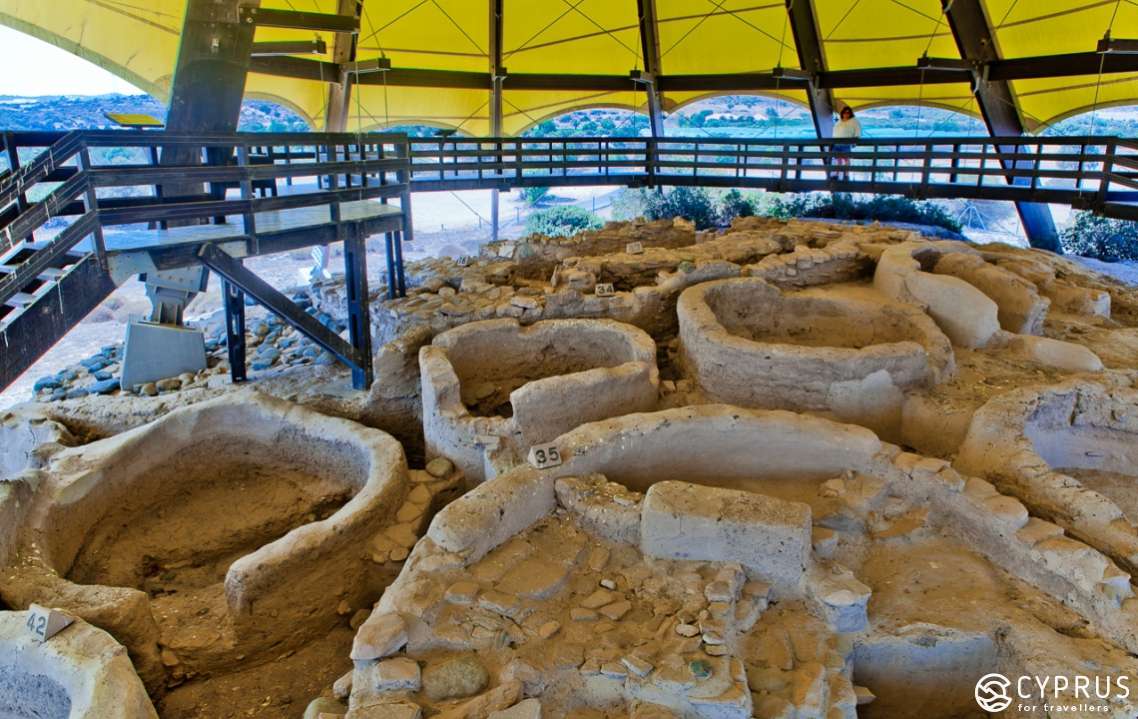
If you still have the energy, time, and a keen desire to learn as much as possible, take a stroll through Kalavasos, the neighbouring village, which was once one of the largest copper mines in Cyprus. Its mining heydey was in the second half of the 20th century. By 1975, however, the reserves had run out and the mines closed. These days, there are only old rails, abandoned trolleys and a steam engine left as a reminder of these former times.
You can also drive a little further (about 5 km) to the reservoir behind the village or to Choirokoitia.
Choirokoitia isn't far from Tenta and Kalavasos. It is an neolithic archaeological site. It was added to the UNESCO World Cultural Heritage List in 1998.
Interesting fact: This is one of the most important and well-preserved prehistoric sites in the Eastern Mediterranean.
It is important as evidence of how society organised life and work in the form of a collective Acermic era settlement (7-4 thousand BC) with surrounding fortifications to protect it (a fortress wall 3 metres high and 2.5 metres thick). Here you can see the modern reconstruction of old houses. Round buildings were tucked close by the city walls that had an external diameter of 2.3-9.2m, and internal of 1.4-4.8m. The roofs were flat though historians previously thought they could be vaulted. They had a hearth, benches, and windows; the larger houses had supporting pillars in the middle of the room.
This population of farmers and herders reached 300-600 people. The villagers were rather short — men up about 1.60m, while women were about 1.50m. Life expectancy was also low at about 22-25 years. The deceased were buried under the floor of houses, which indicates they observed a cult of the dead and their ancestors. This, naturally, did do anything to increase the life expectancy or boost the health of the living. The farming and herding settlement was abandoned by its inhabitants in mid 6000 DC but the reason is unknown. Later, a settlement formed a 1000 years later (in the ceramic period). It was finally abandoned in early 4000 BC.
The site was discovered in 1934 by Porfirio Dikeos, director of the Department of Antiquities. He carried out six excavations (from 1934 to 1946) and published the initial results The Journal of Hellenic Studies in 1934. A French mission led by Alain Le Brun took up the excavations again in 1977.
Opening hours: Winter: daily 08:30-17:00, Summer: daily 08:30-19:30
At the weekend: 9:30-17:00
Admission: 2.50 euro (20% discount for groups of 10 or more. Accepts the Museum Card system.)
Telephone: +357 24322710
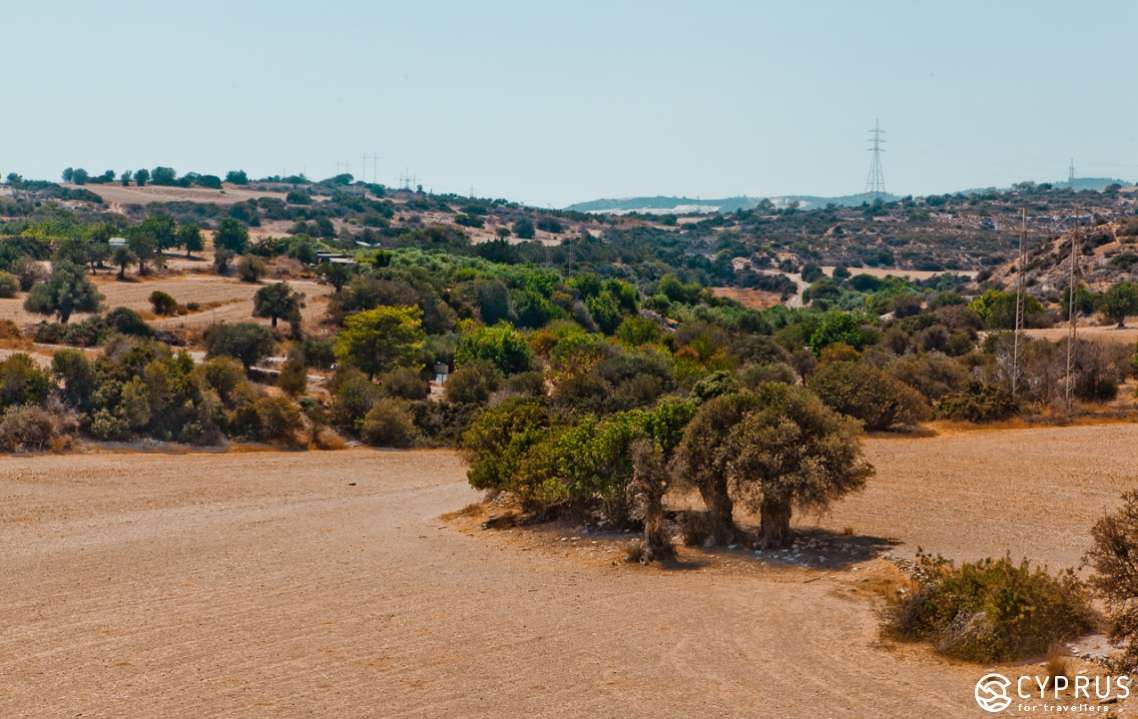
Hints and tips:
Our tip: the area boasts a wealth of archaeological finds and ancient settlements so plan out your route to cover as much as possible.
How to get there:
To Tochni: follow the sign and leave the motorway onto the B1, where you have to turn left towards Larnaca. After 800m, turn left towards the village. After turning, continue for another 2 km. Once you reach the church of the Saints Constantine and Helen, you'll find a car park where you can leave the car.
To Tenta: Take the A1 motorway and drive 20km from Limassol. You'll see a sign to Kalavasos and Tenta... if you miss the sign, you won't miss the big white tent. Turn left off the road, in 350m you'll be there.
For those driving from Protaras, Ayia Napa, and Larnaca:
Drive along the A1 towards Limassol. Take the exit to Choirokoitia. Then, take the B1 until you turn right towards Limassol. Continue for another 5km before take the turn to Tochni. Turn right and continue another 2km to Tenta. As before, you'll find the car park near the church of the Saints Constantine and Helen.
Other transport: The 401 and 450 bus routes run through Tochni.
Happy adventuring! ‘Til next time!
